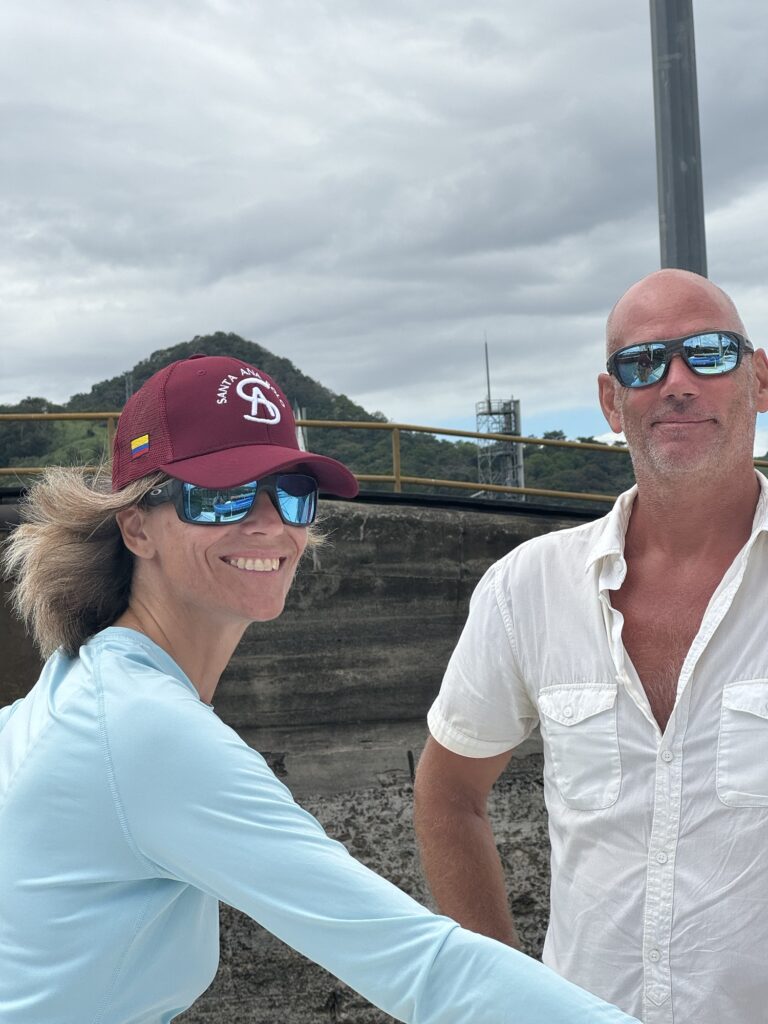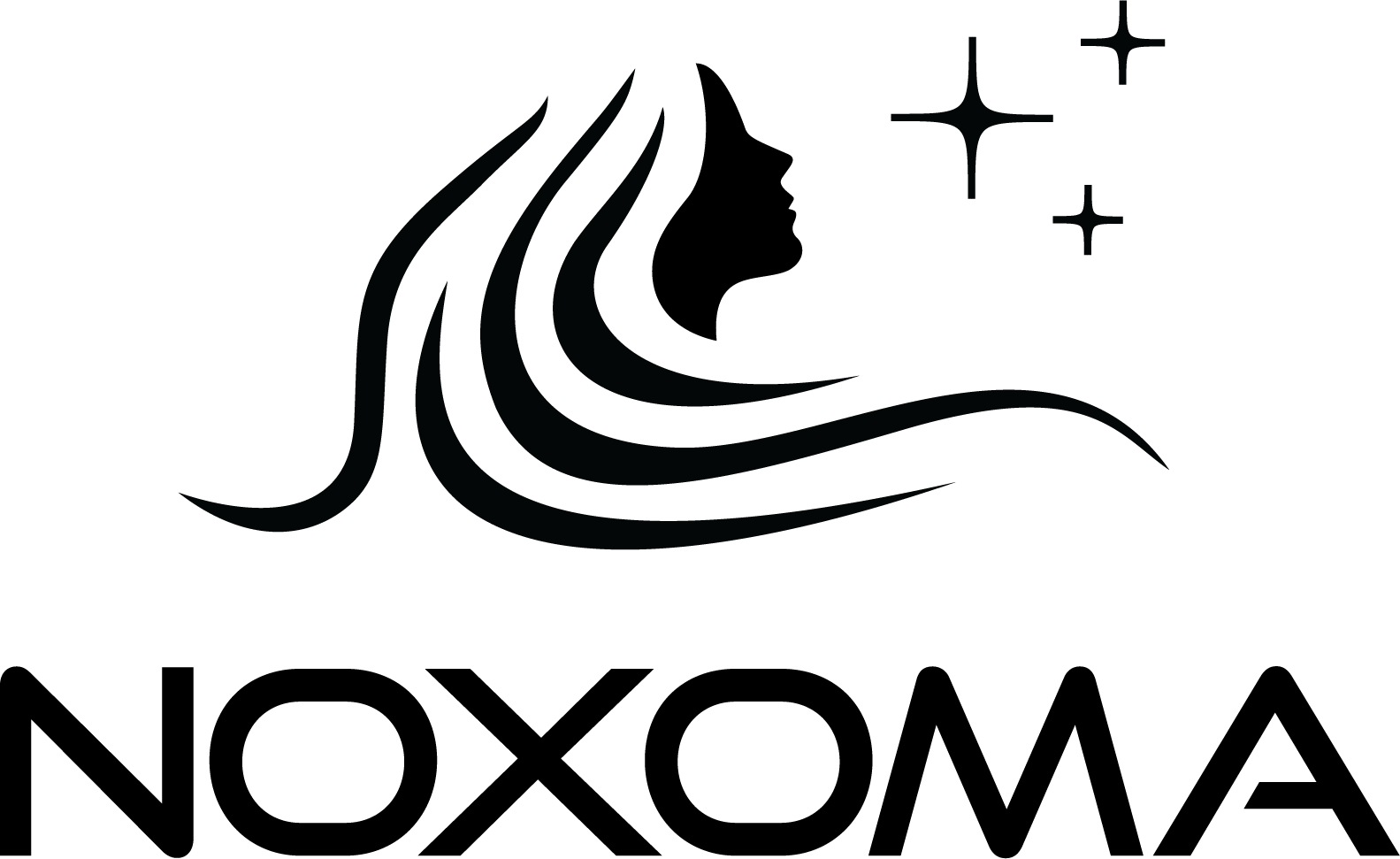Transiting the canal is definitely a big milestone for us. We are now leaving the Caribbean, which is one of the best cruising grounds there is. Our favorite places have actually been in the South American countries we have visited; Venezuela, Colombia and Panama.
The Caribbean windward islands are lovely as well, but very expensive and with LOTS of boats. Which is one of the reasons we are heading out into the Pacific after only one season in the Caribbean.
After spending six weeks in San Blas, we arrived at the anchorage just outside the city of Colon after a 12 hour and 70 nautical mile day sail. We spent the night at the anchorage, before we went into Shelter Bay Marina, on the Caribbean side of the Panama Canal.
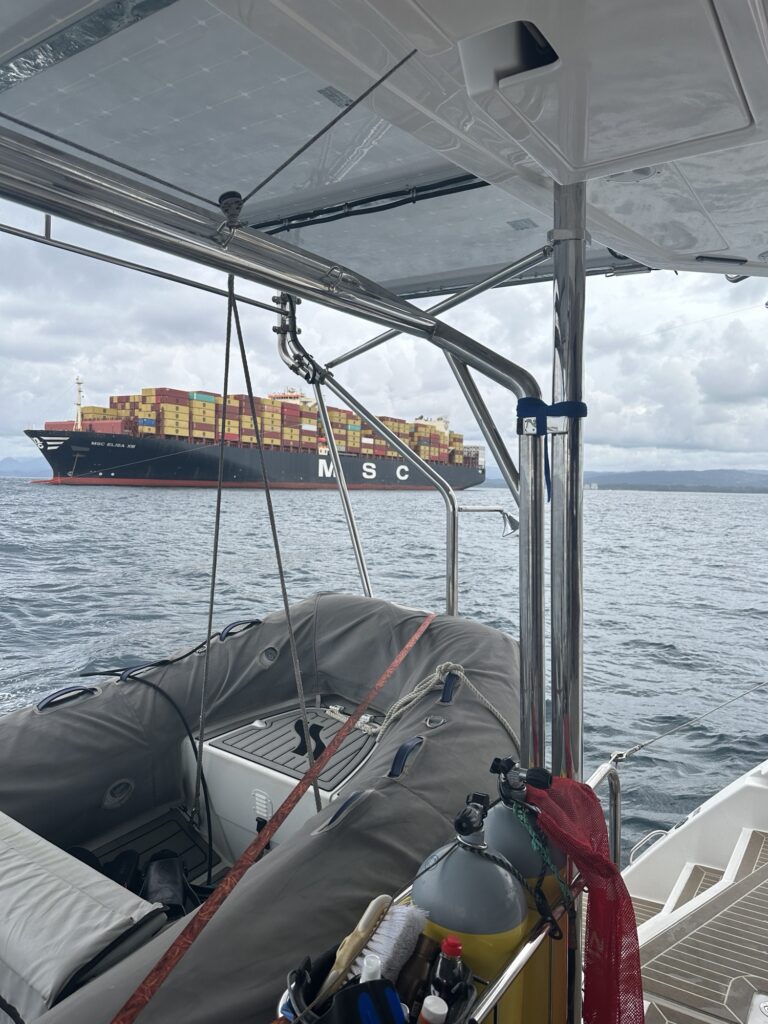
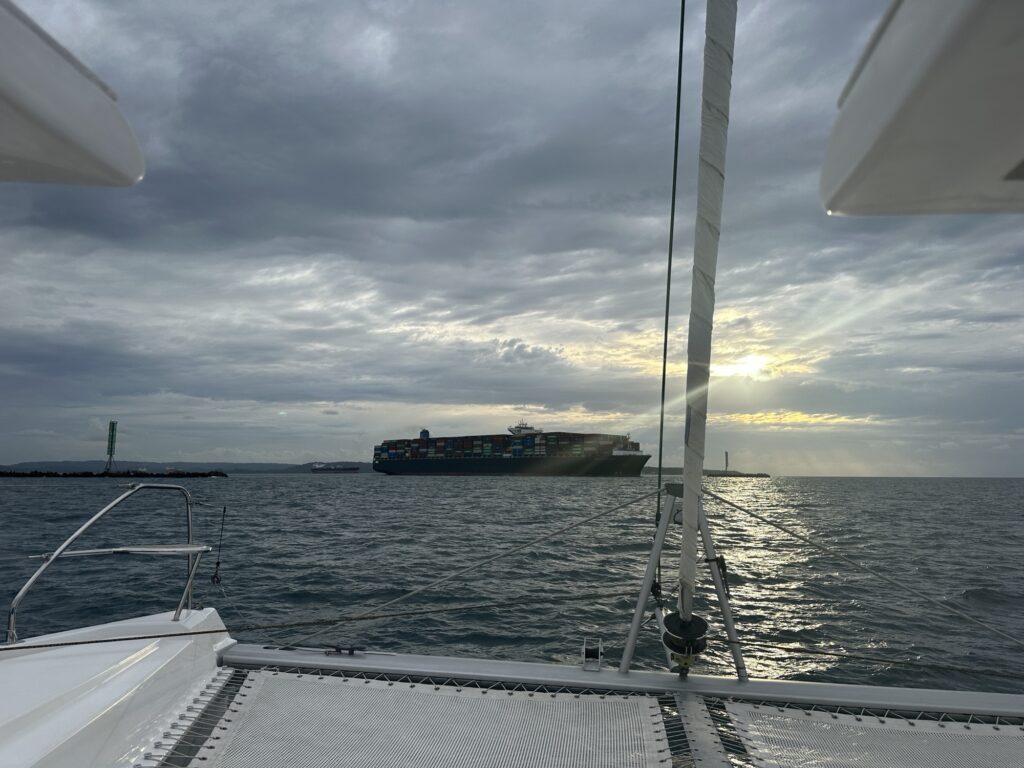
Shelter Bay Marina is where most cruisers stay before and after their canal transit. It is easy to meet fellow sailors and share tips and experiences. It is also our first stay in a marina after we left Cape Town. Waking up and looking directly into a boat next to us got some getting used to!
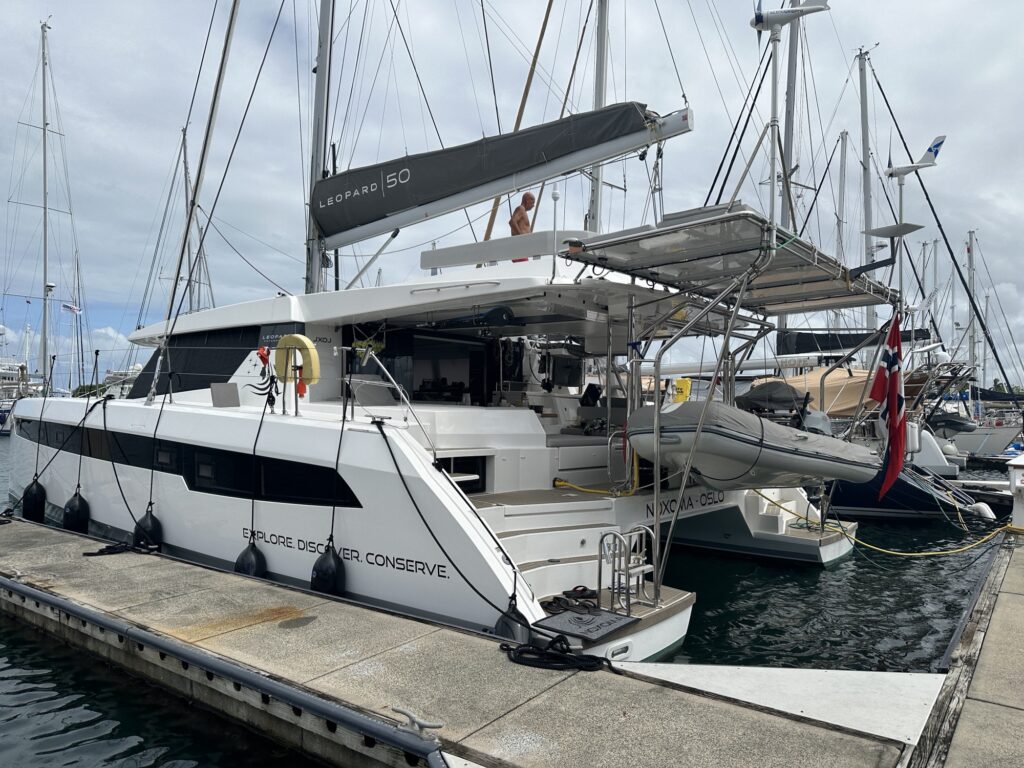
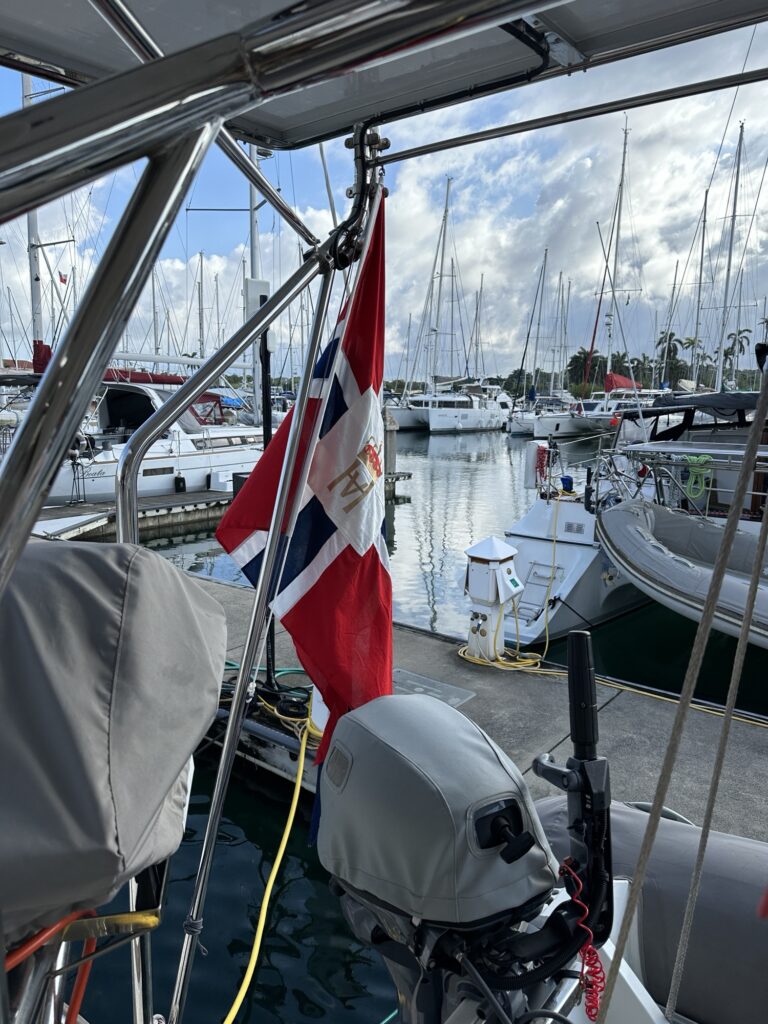
The sailing community in Shelter Bay is big and very active. It is easy to meet fellow sailors, and it is a great spot for doing boat work. So, many boats stay there for quite some time. As we have just done a lot of work on the boat during the 3 months on the hard in Aruba, we were only there for three nights. We met both new sailors and people we have met before at other anchorages. We got to celebrate New Year’s Eve at the marina, as our transit was scheduled for Jan. 2. It was lovely to hang out with fellow sailors.
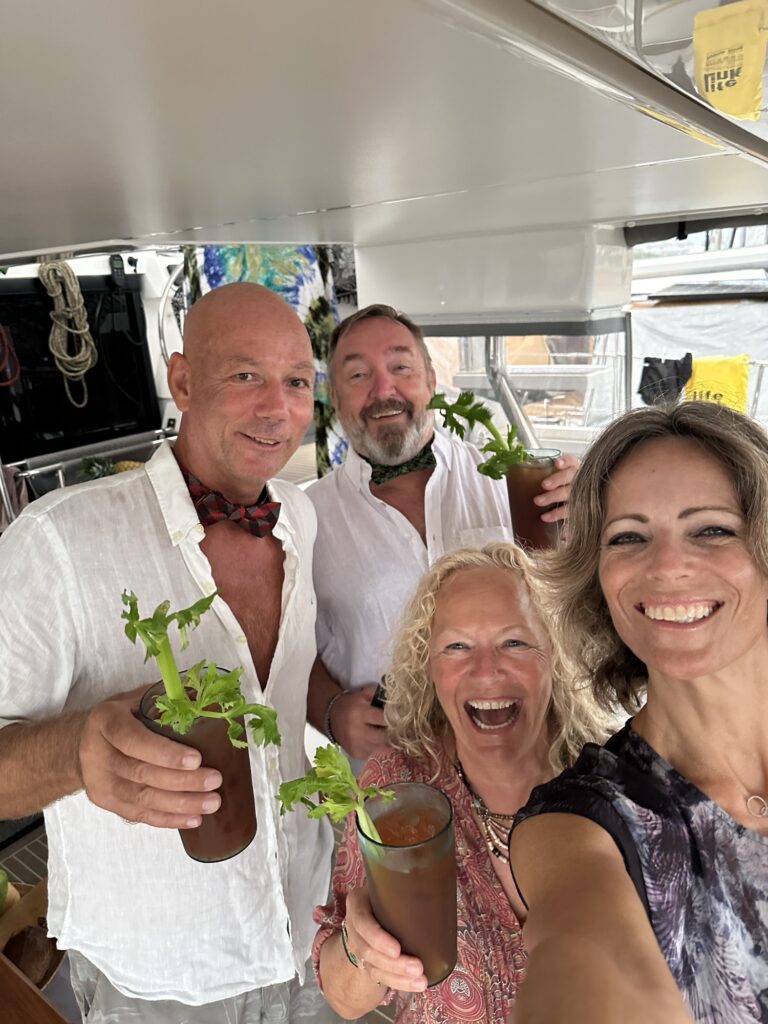
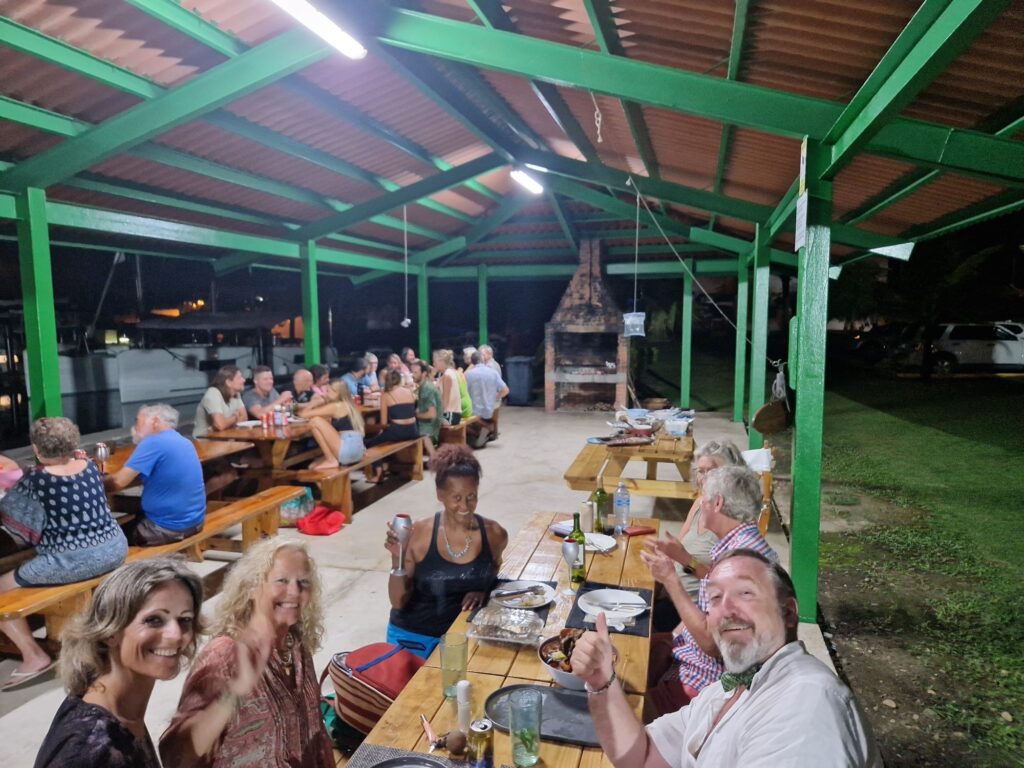
When you transit the canal, you need a crew of five on your boat; the captain at the helm, and four line handlers managing the lines from each “corner” of your boat. So, two at the bow and two at the stern, on the port and starboard sides.
Our friends visiting from Norway, Hanne and Rune, are still with us, so we were only one person short. We decided to hire a professional line handler through our agent, who is handling the canal transit on our behalf towards the canal authorities.
We all agreed that was a very good decision. Having one person on board who has worked lines for many years, ensures you do things right from the get go. Our line handler, Mario, stayed with us for our two day transit, and even celebrated his birthday on board. We bet it is the first time he has heard the Norwegian birthday song!
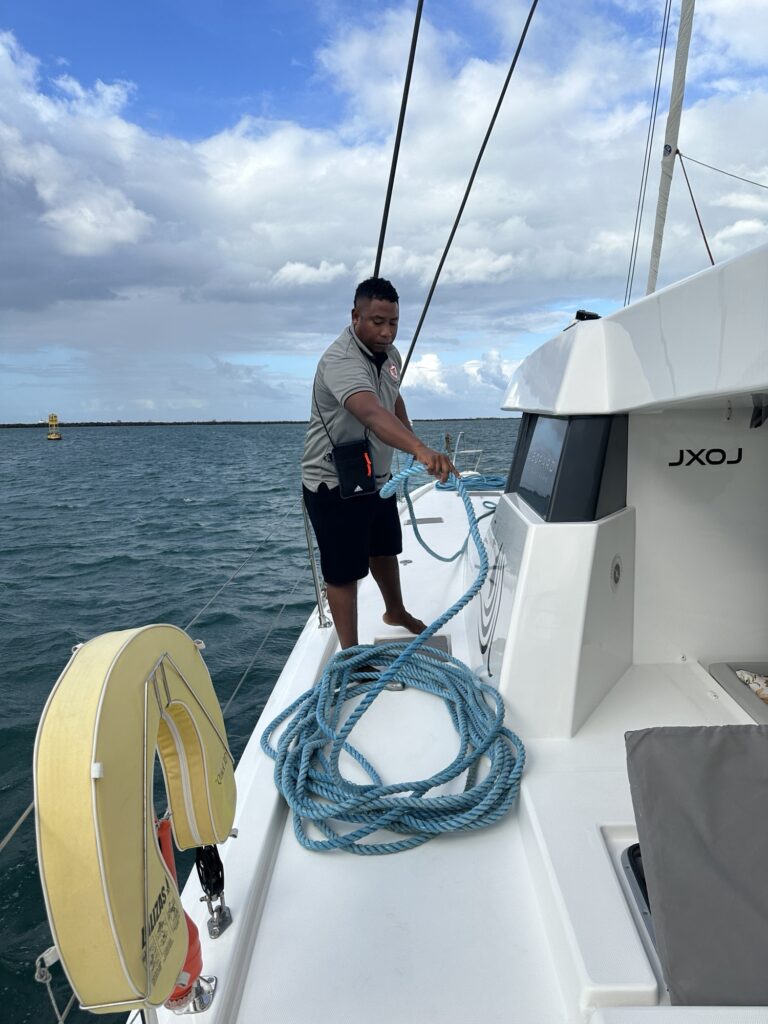
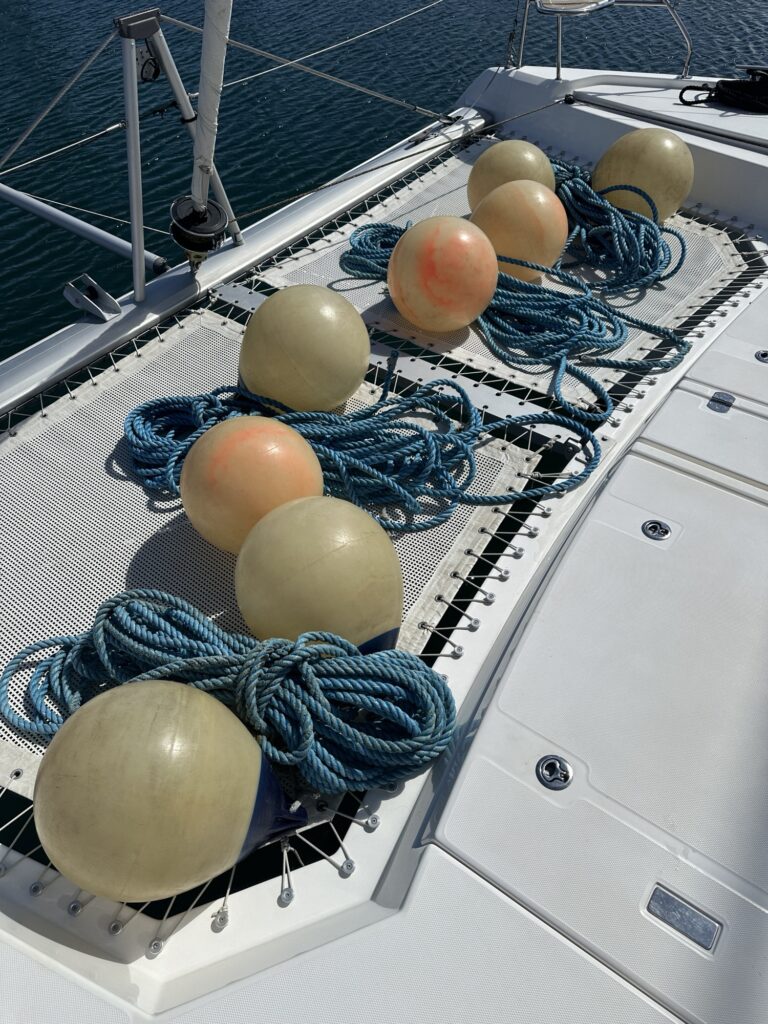
You also have another person aboard, and that is your advisor. This person communicates with the canal authorities, and ensures we enter the locks when and how we should.
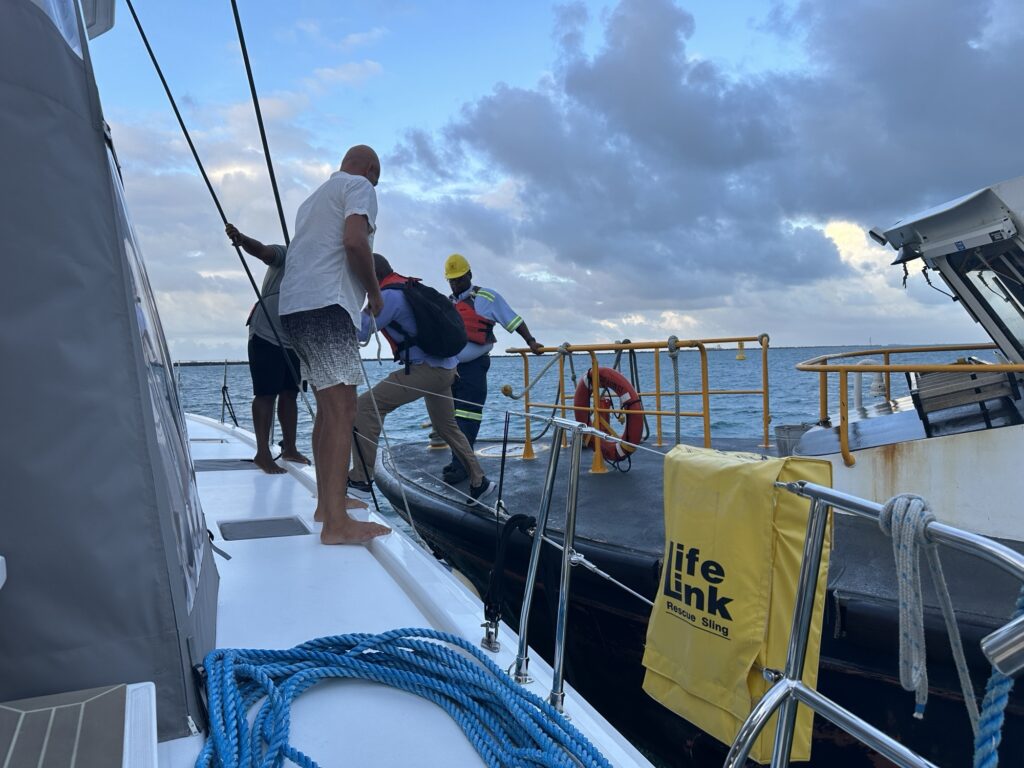
You can go through the canal in one day, but we had a two day passage, which means you stay overnight on a buoy on the manmade lake Gatun, 26 meters above sea level.
The first night we went through the first three locks, we went in right after nightfall, and it was pouring down.
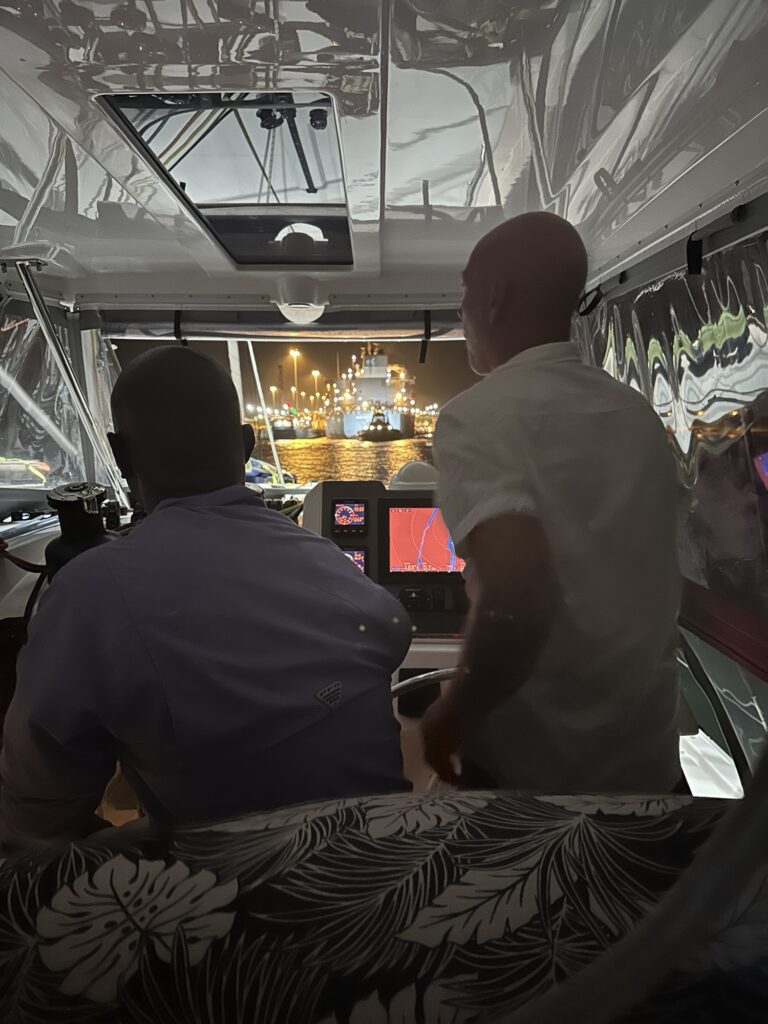
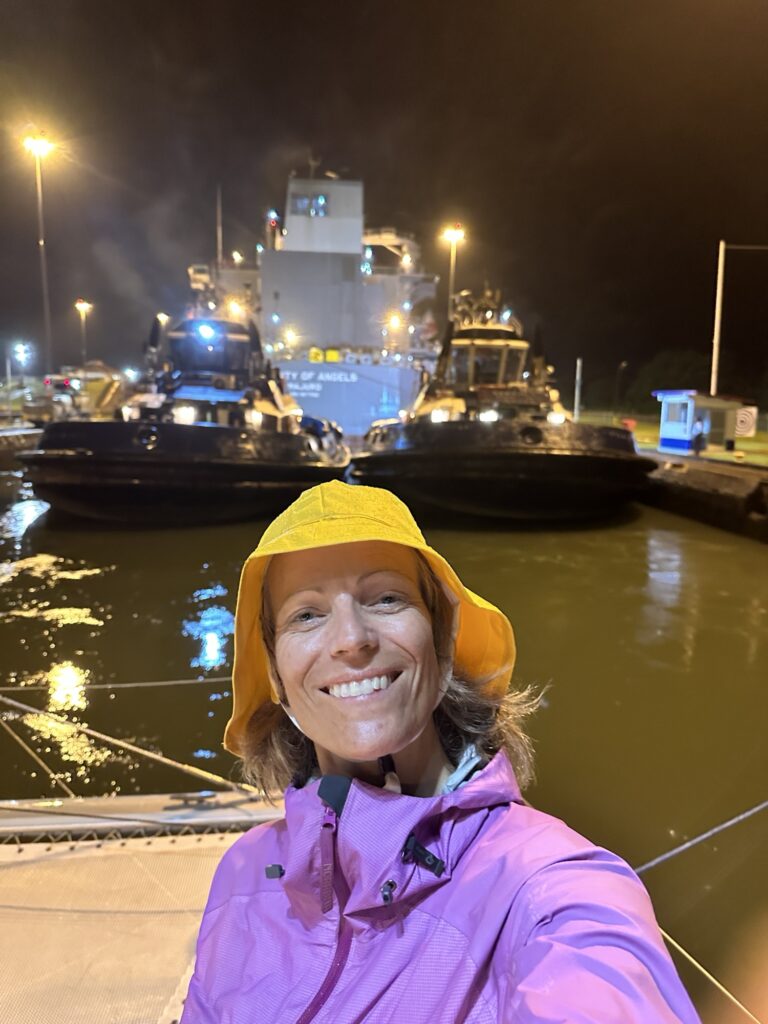
We were happy Mario was there to ensure the “monkey fists” thrown from the onshore line handlers reached us safely. In the dark, and in pouring rain, it was not easy to spot anything flying through the air. And, nobody got hit in the head with the 1.5kg lead piece of “monkey fists” which helps the lines be exchanged between the line handlers onshore and in the boat.
We shared the first three locks with a small tanker and two tug boats, and we could definitely feel the force from the tugs as they revved their engines.
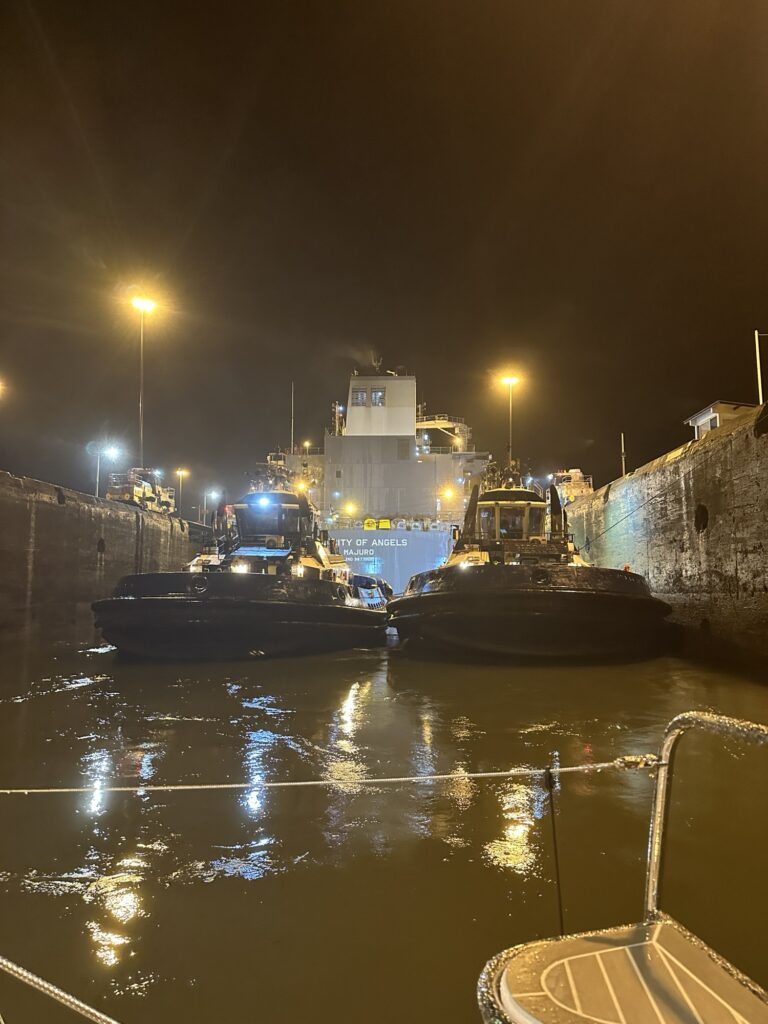
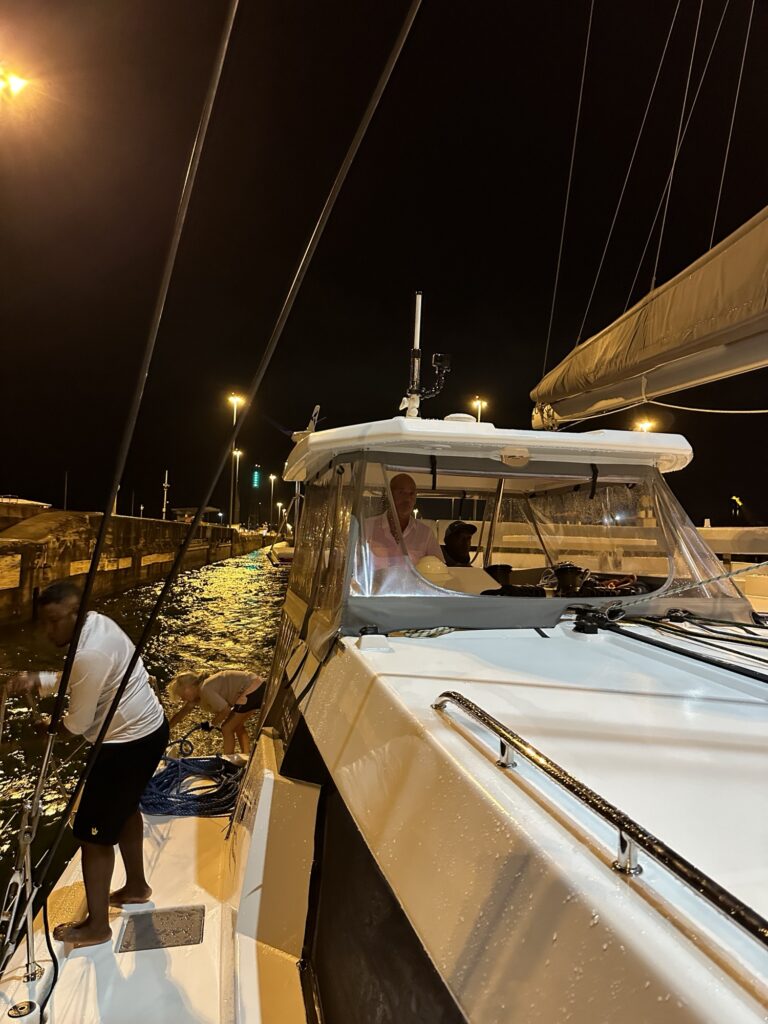
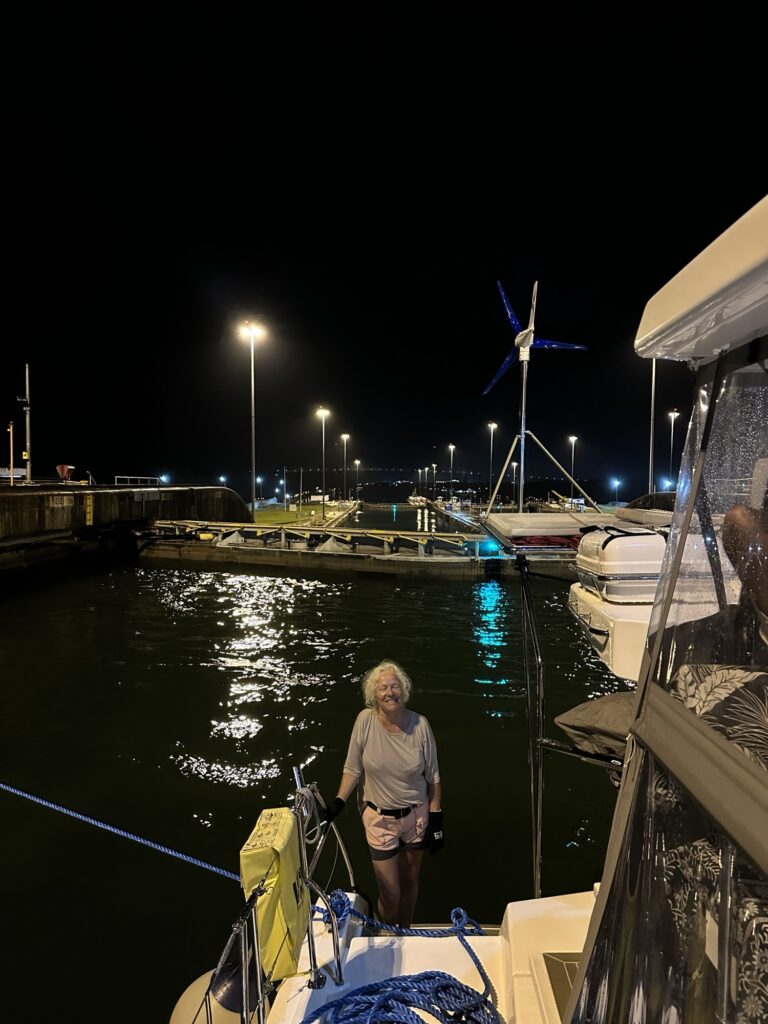
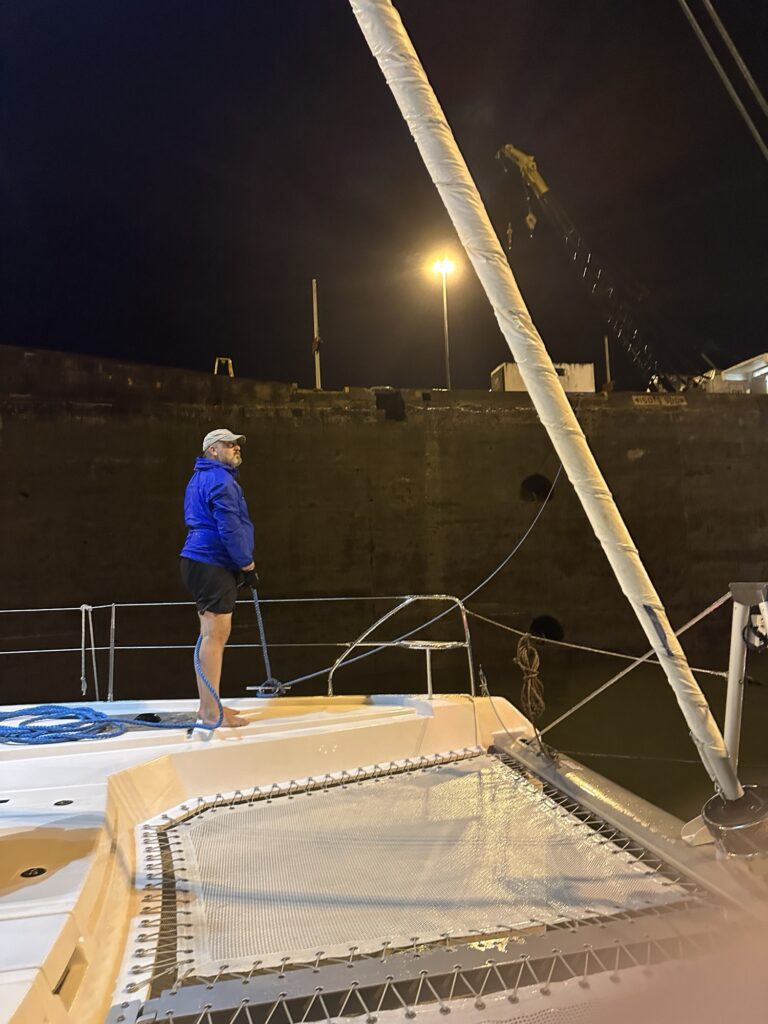
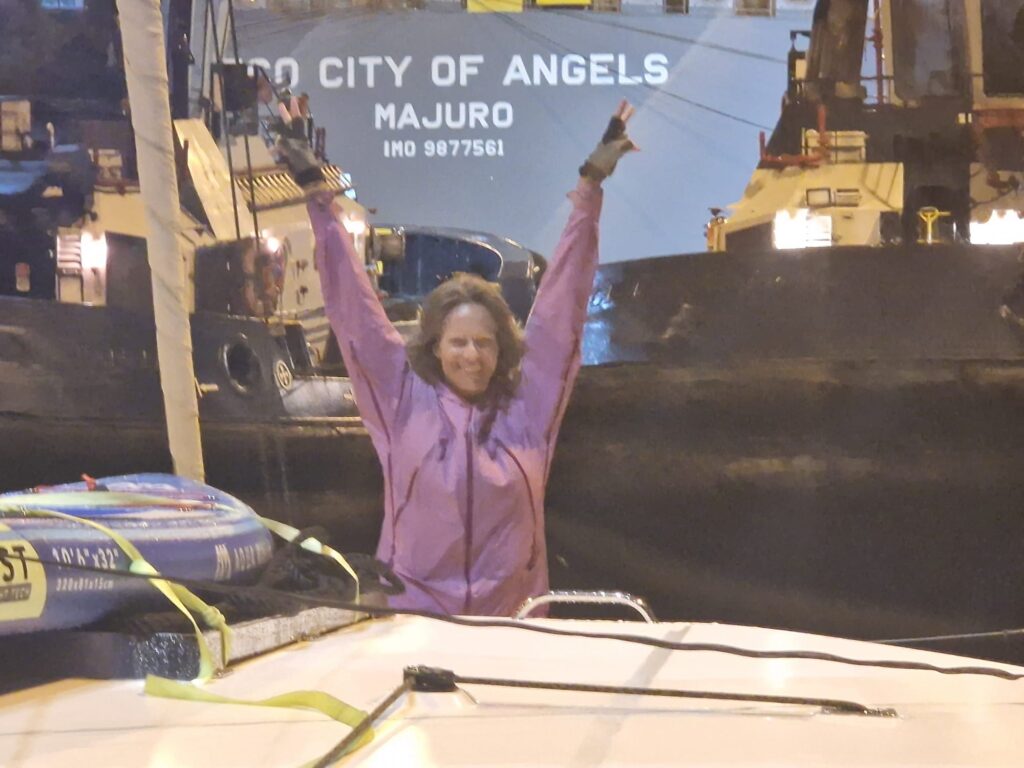
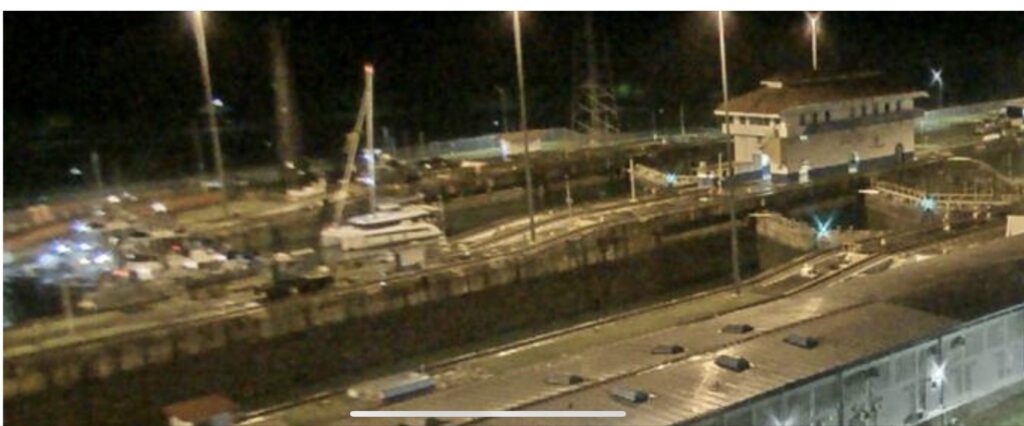
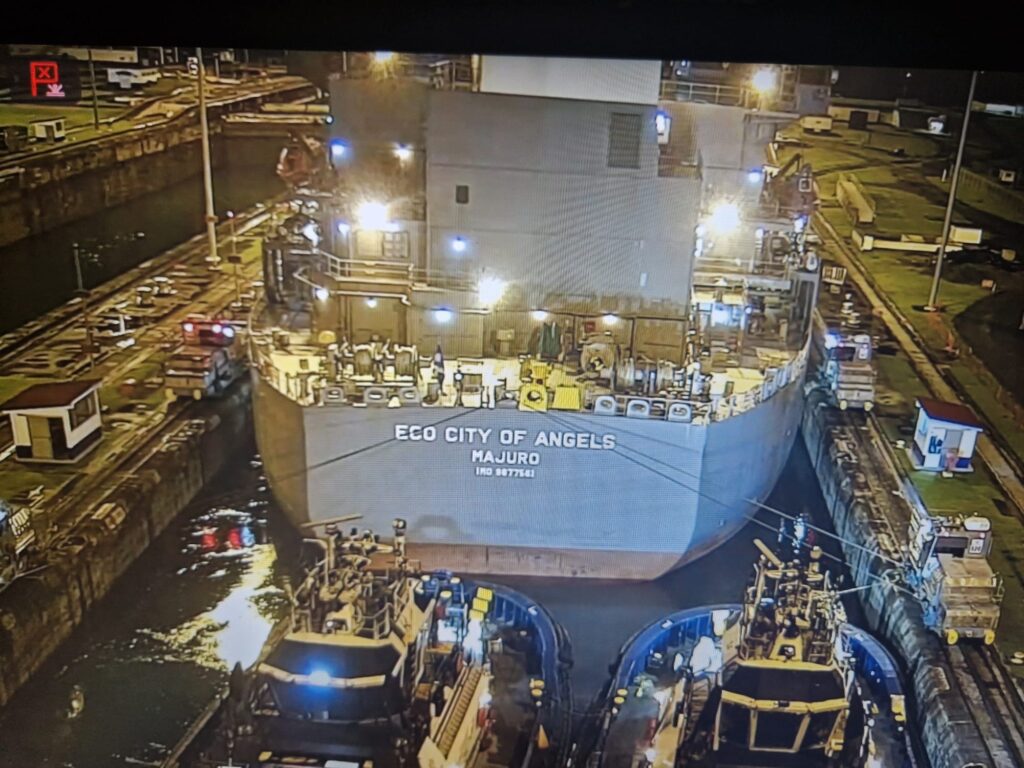
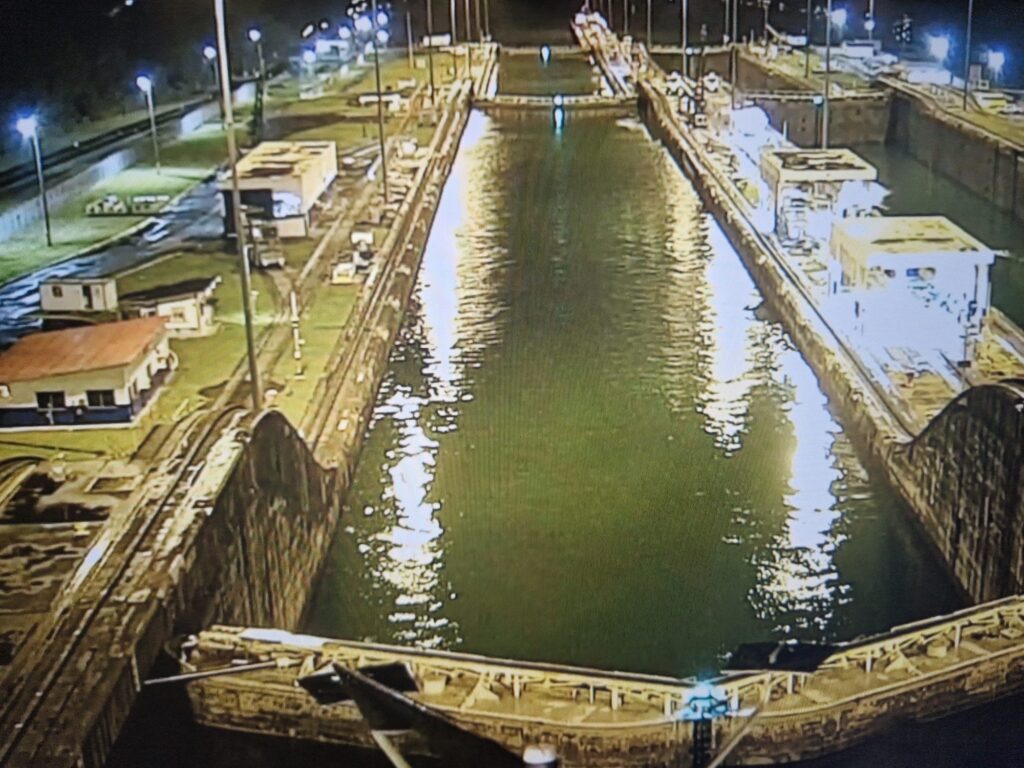
Everything went smoothly, and we entered into Gatun Lake and motored ten minutes to reach the buoy we were going to spend the night tied onto. We settled in for the night, by the sound of howling monkeys onshore.
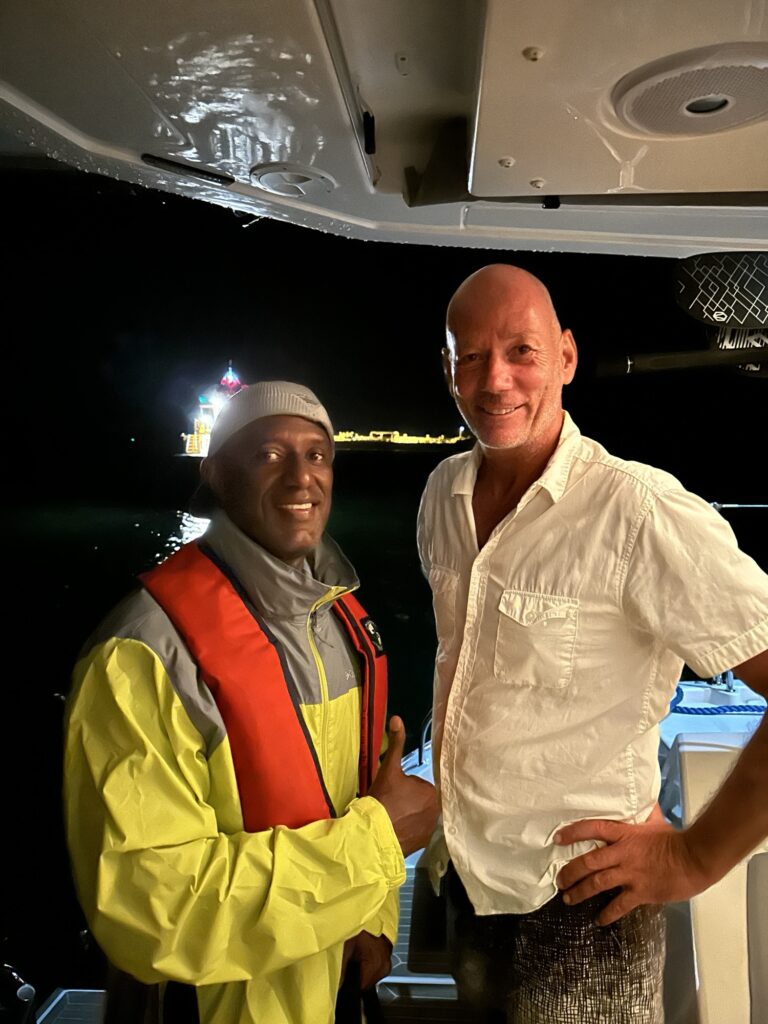
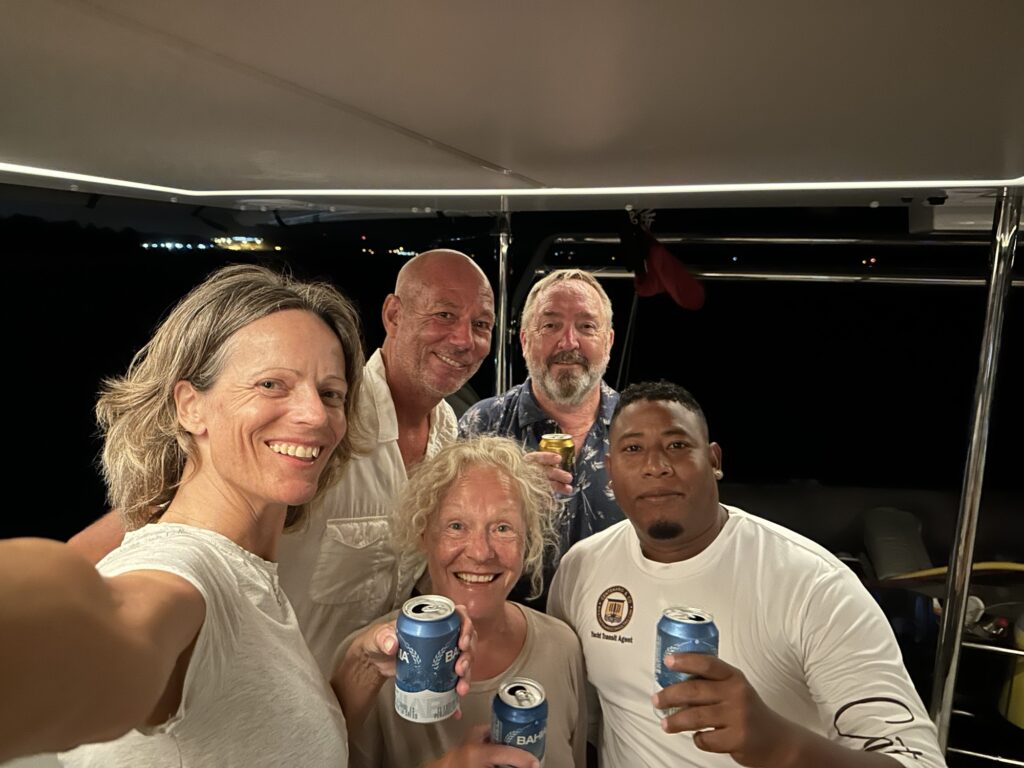
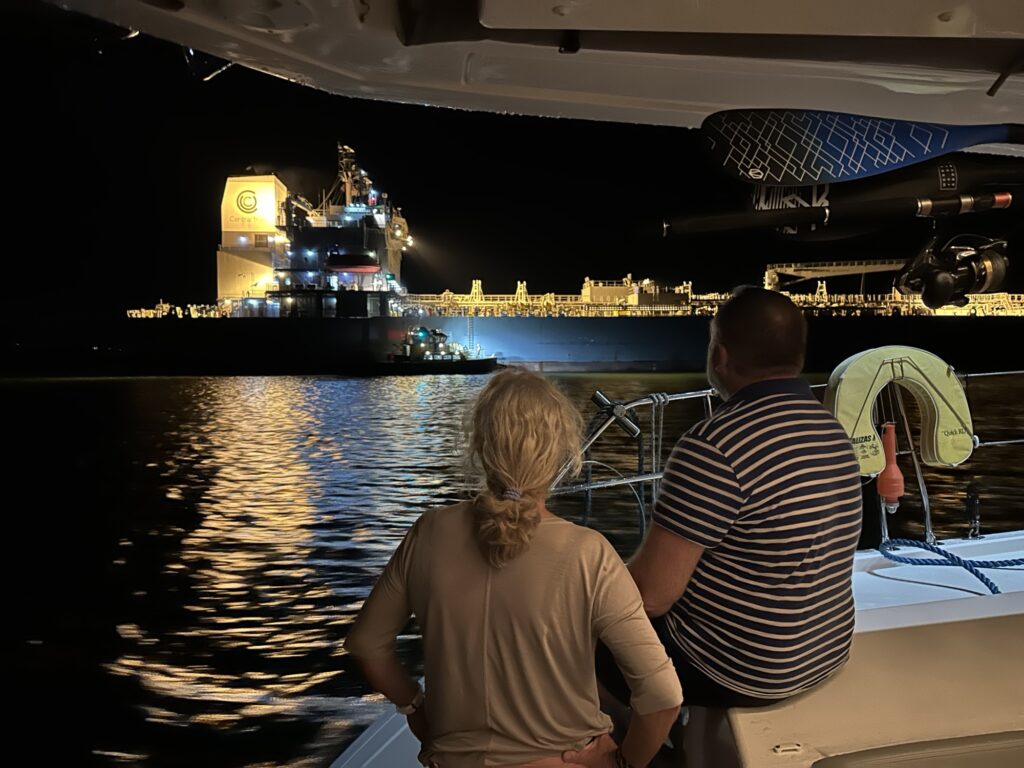
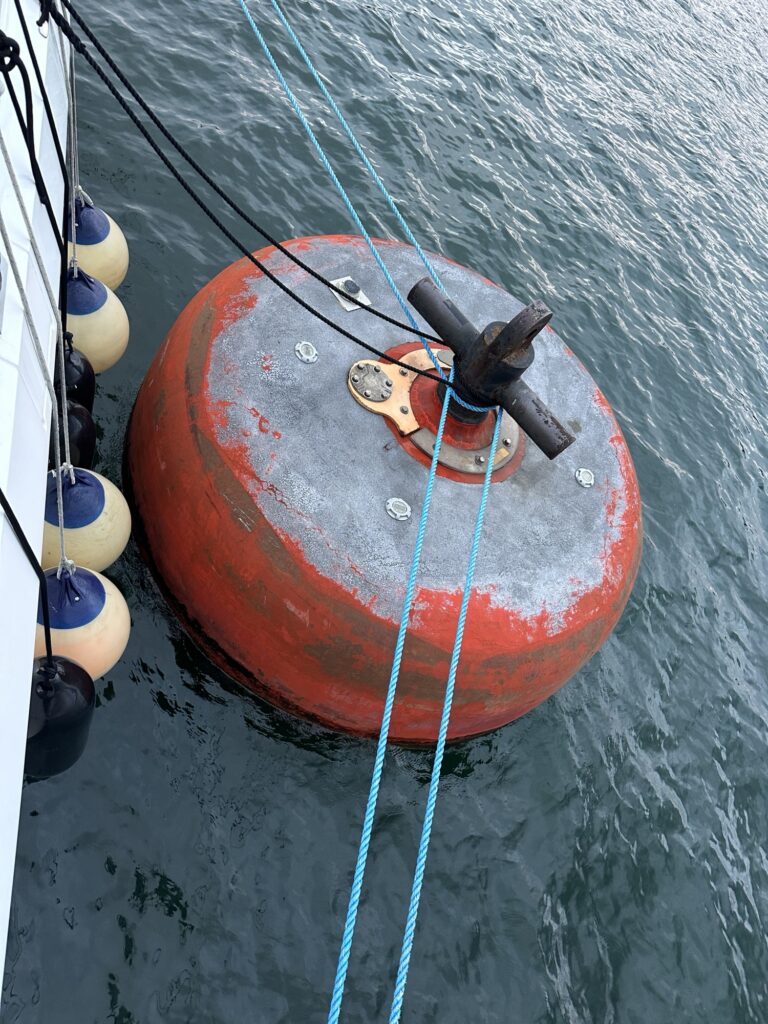
The next morning, we received our second advisor, Kirsty, at 07:30. She briefed us quickly, before we headed out for a four hour motoring passage on the lake and through some amazing scenery.
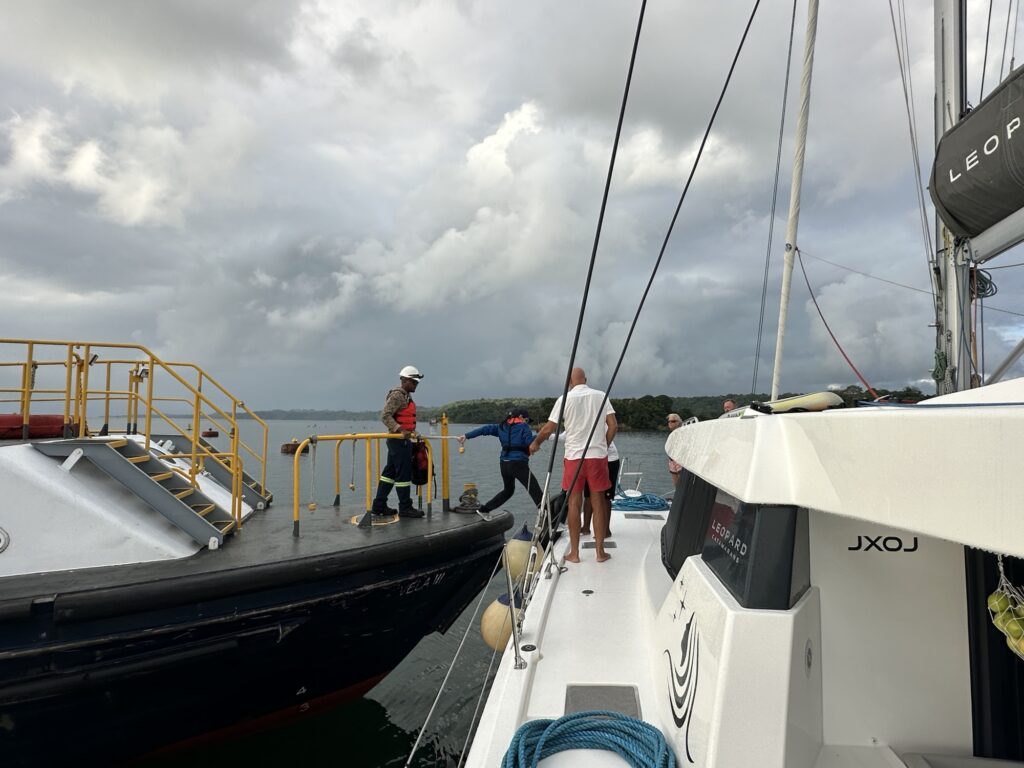
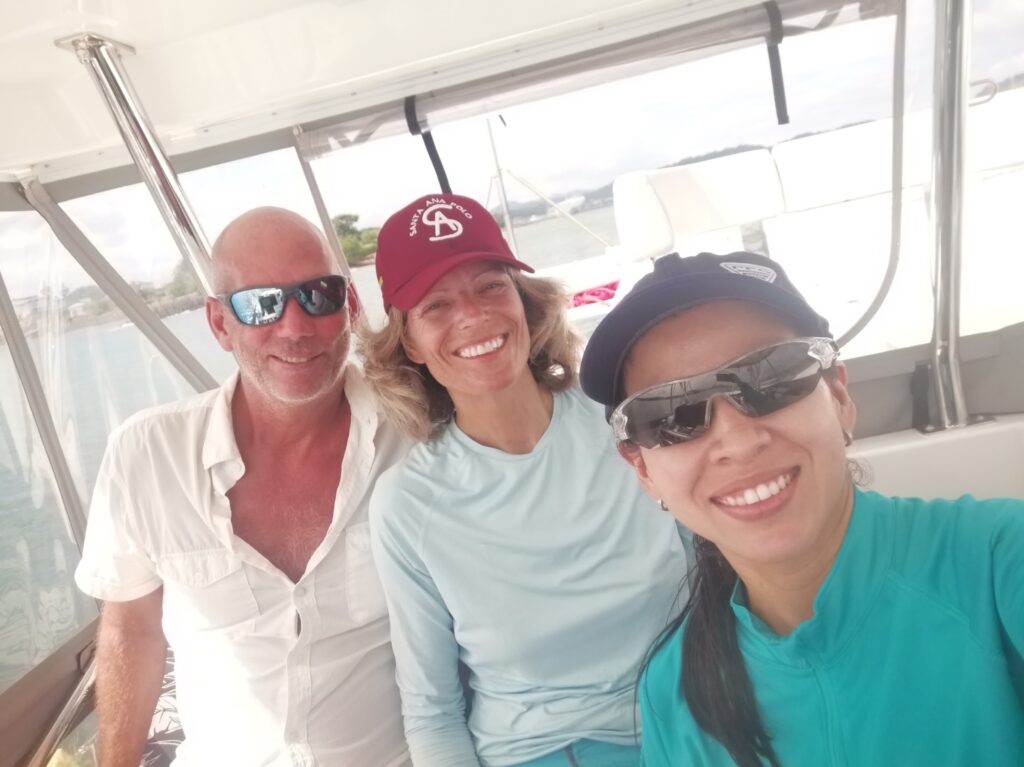
The most impressive part was the Culebra Cut, which is the deepest excavation done on the canal. This is the cut through the mountain range that connects Gatun Lake with the Pacific side.
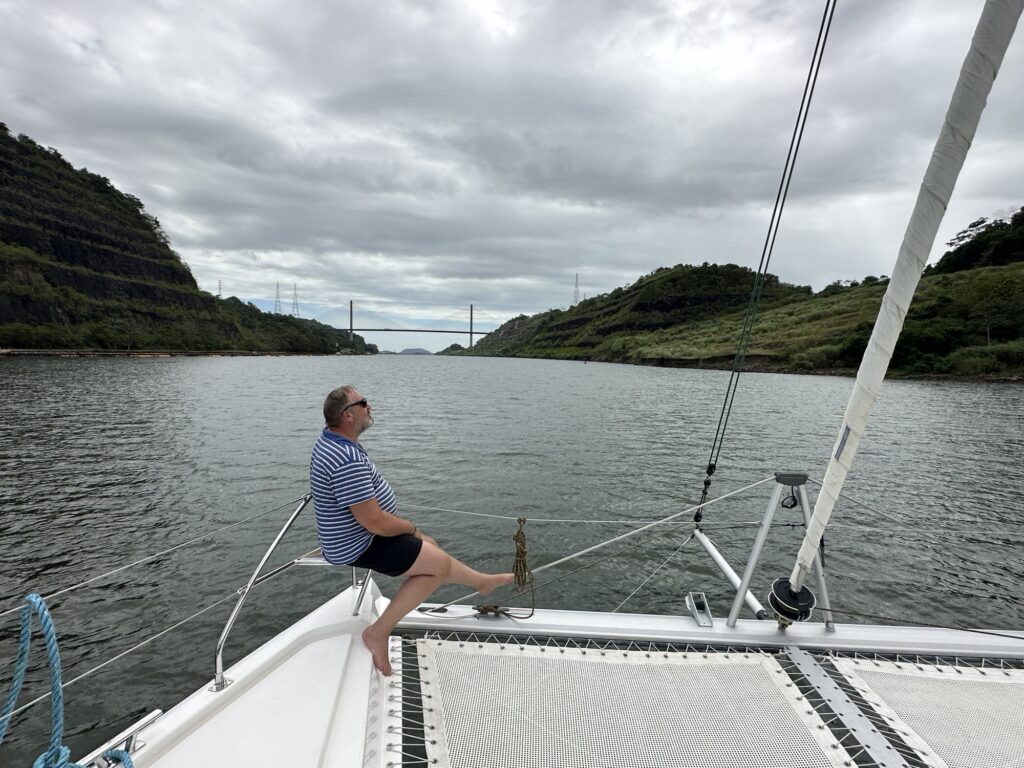
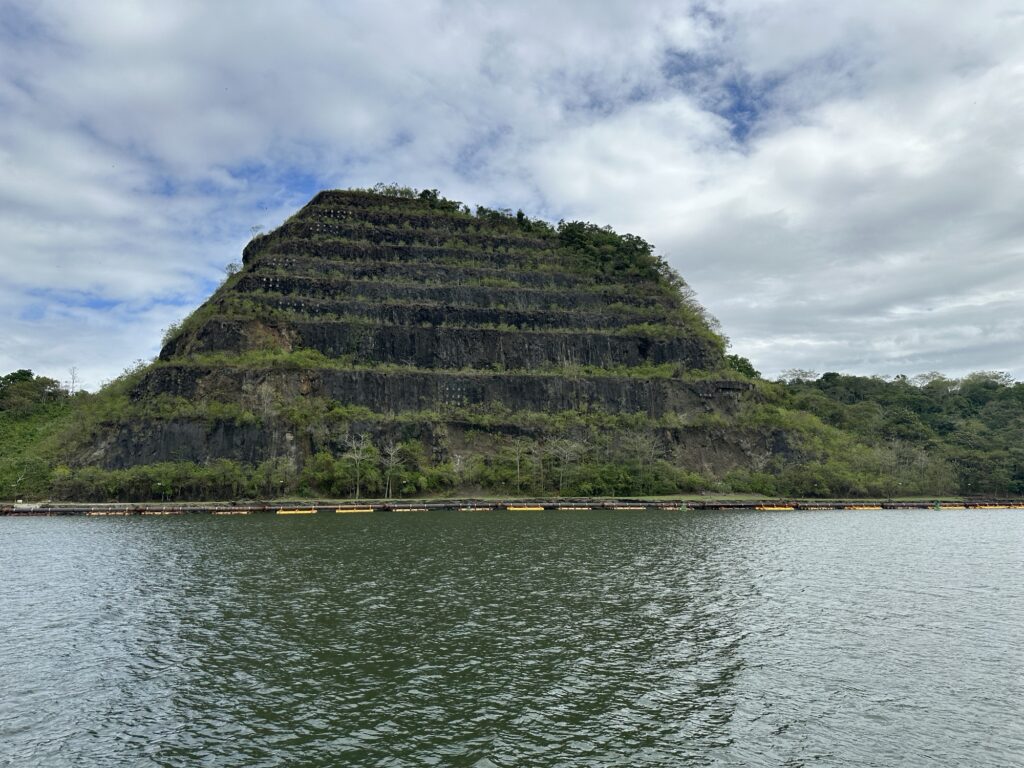
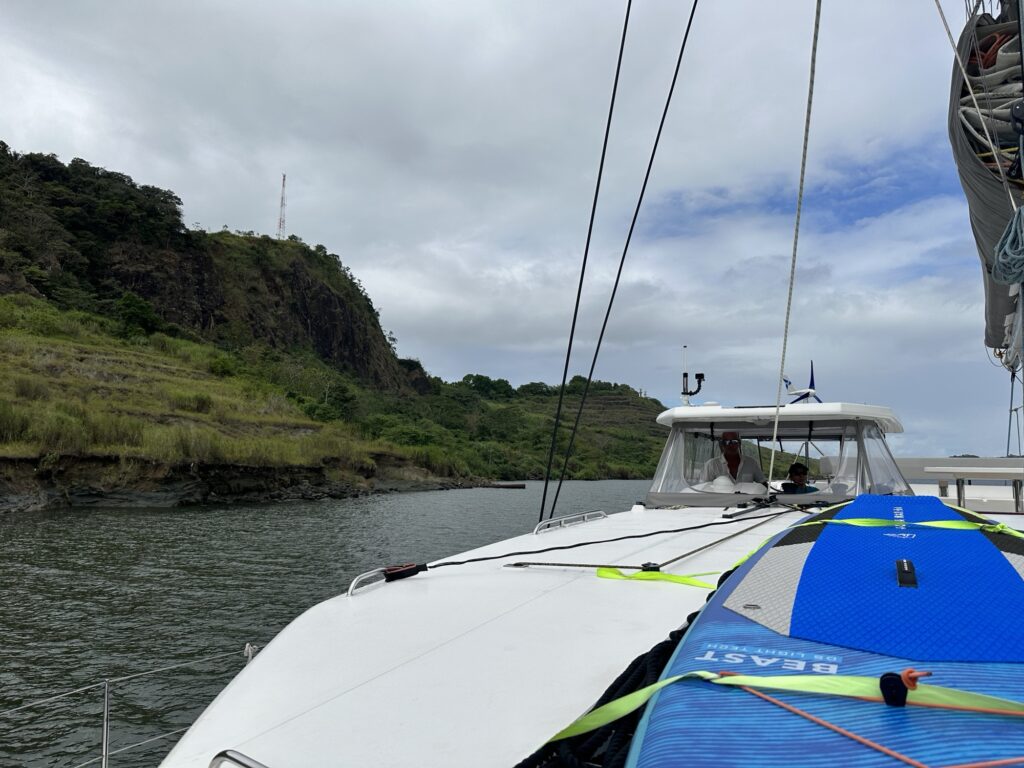
We entered the first lock on the Pacific side, now in front of a huge chemical tanker. Due to the way the currents work inside the locks, we stay behind the ships on the way up, and in front on the way down. It was quite impressive, and a little scary, to see the big ship slowly approaching us as we were sitting ducks inside the lock. The ships have heavy locomotives that pull them forward inside the locks, which keep them steady at all times.
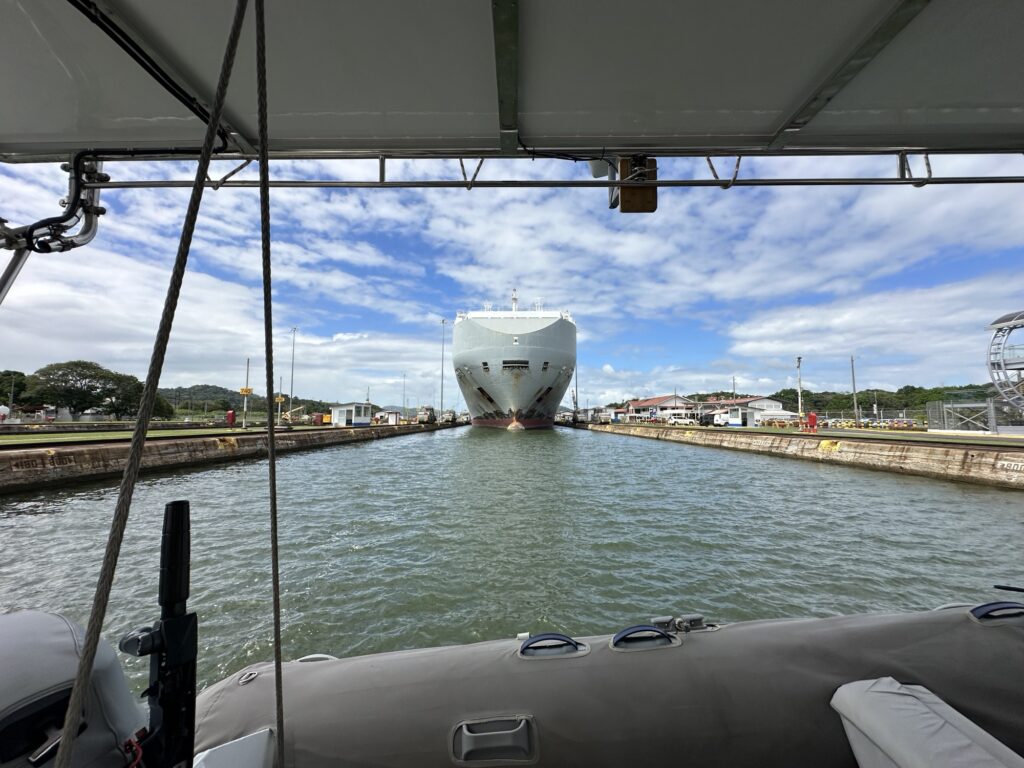
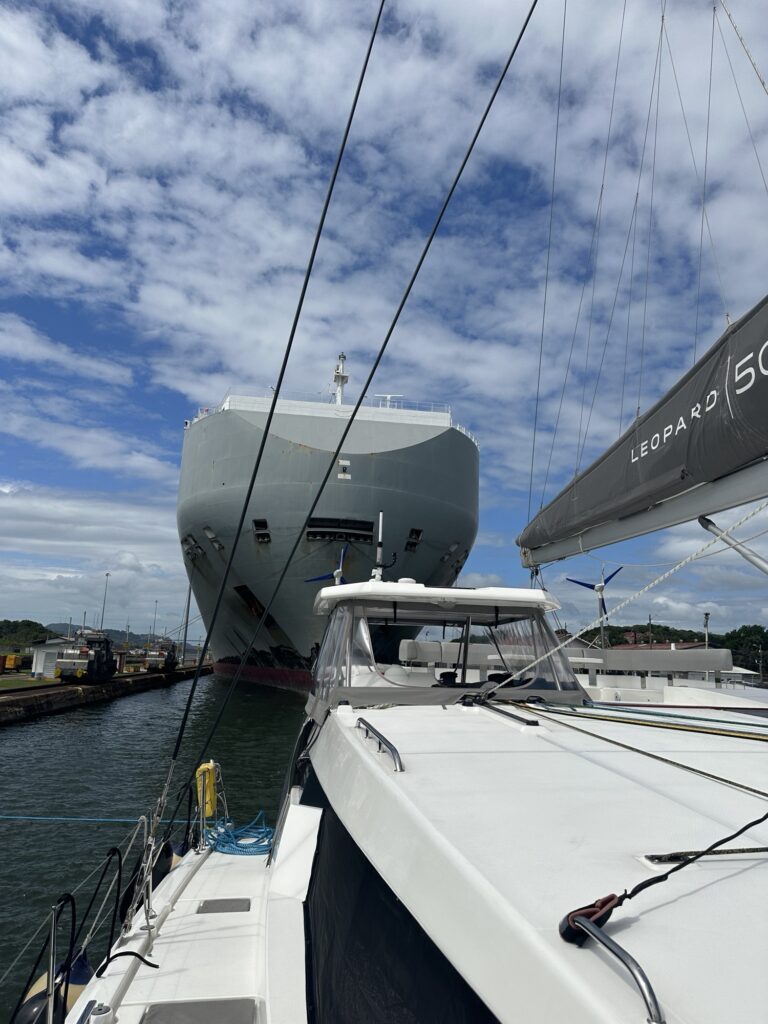
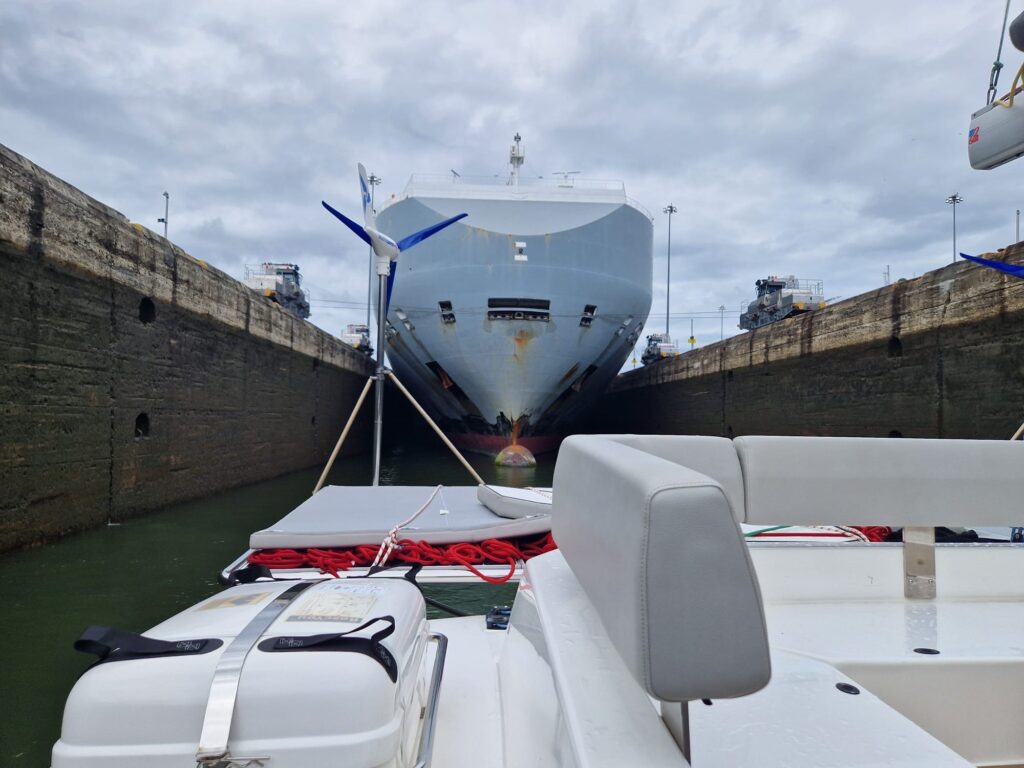
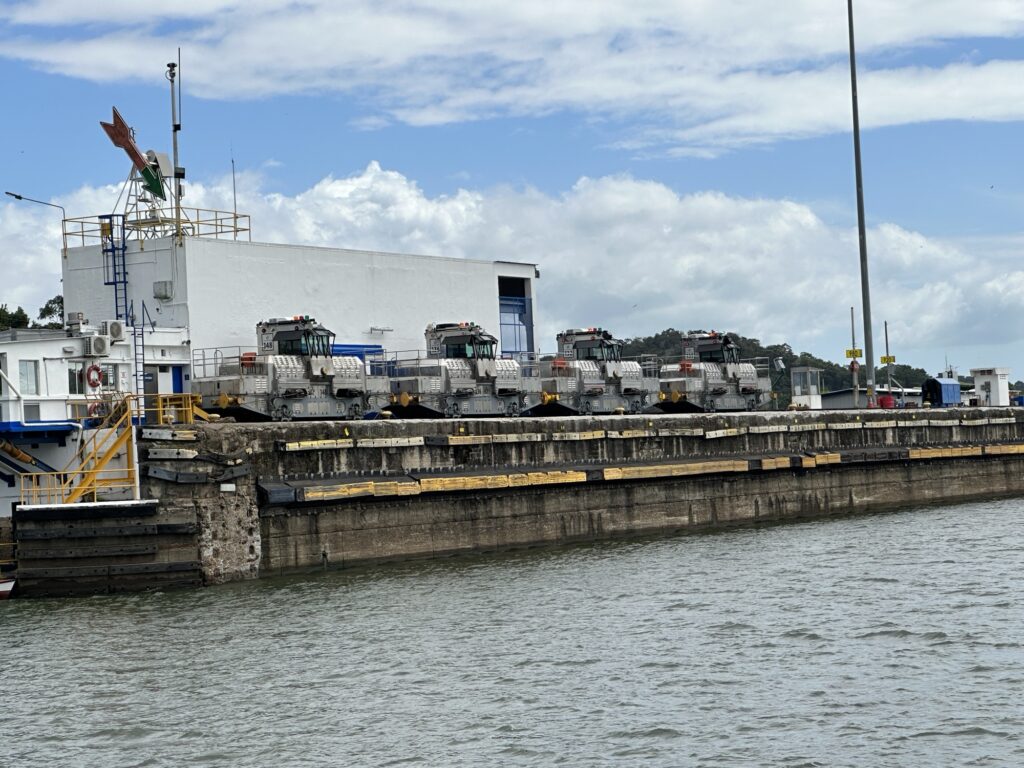
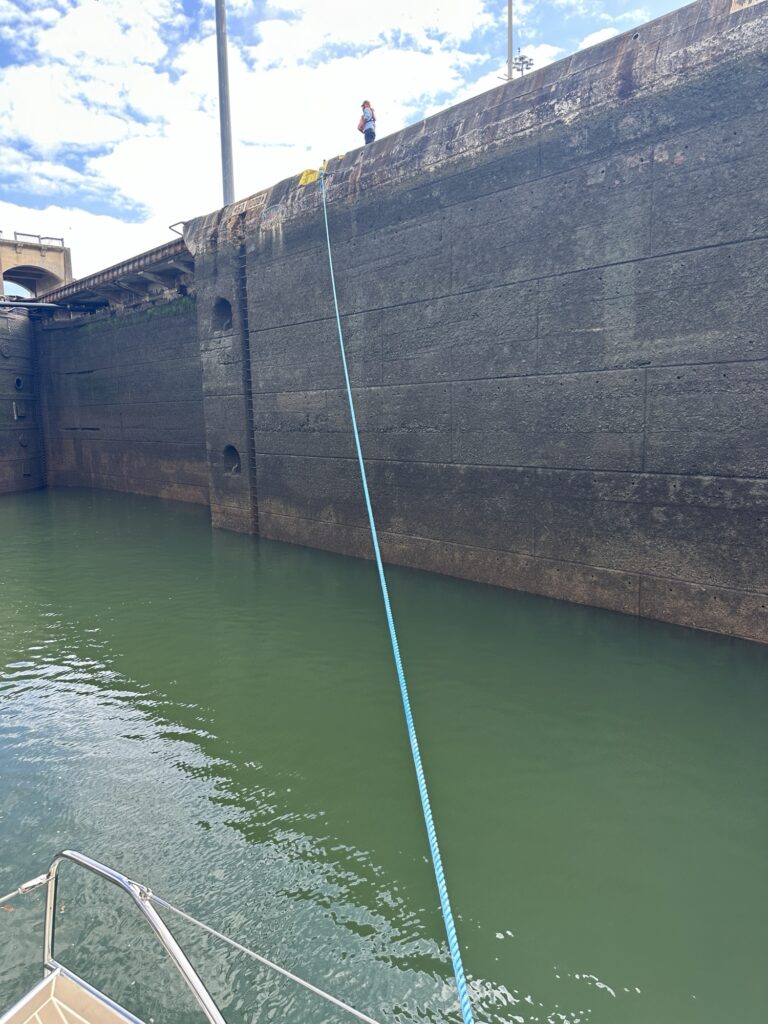
We went through the old locks, which means you first go through one, then motor for 1.5nm, then go through the two last locks. There was a viewpoint with lots of tourists watching us at the last lock, and we even got some photos from one of them, who contacted us online!
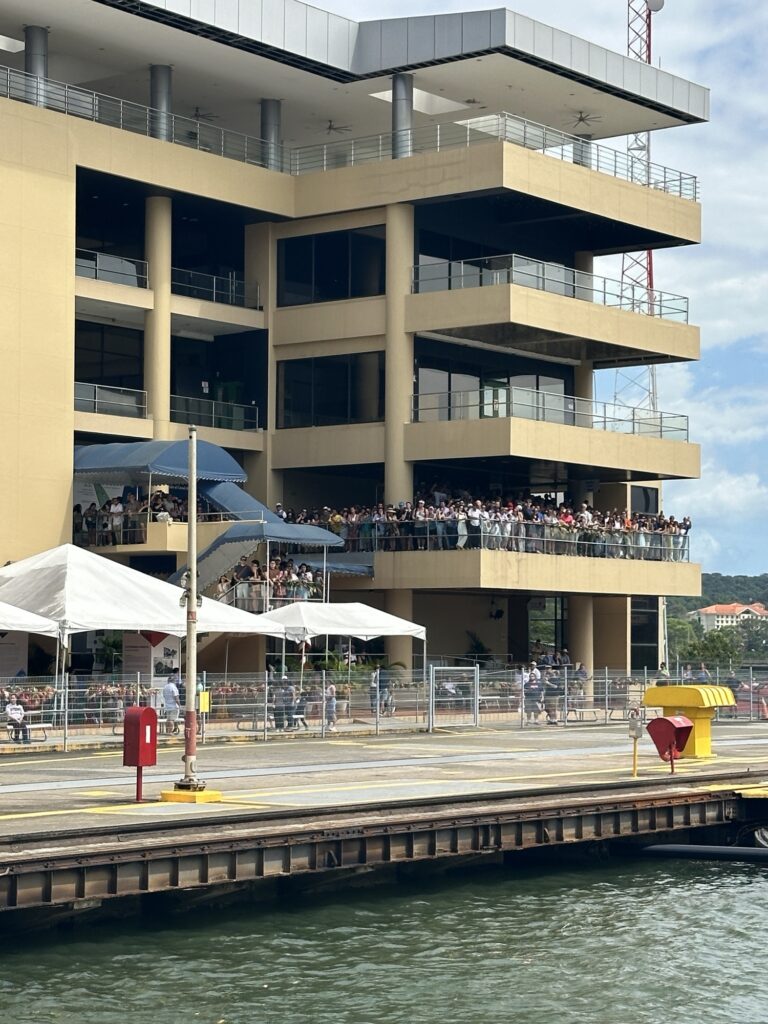
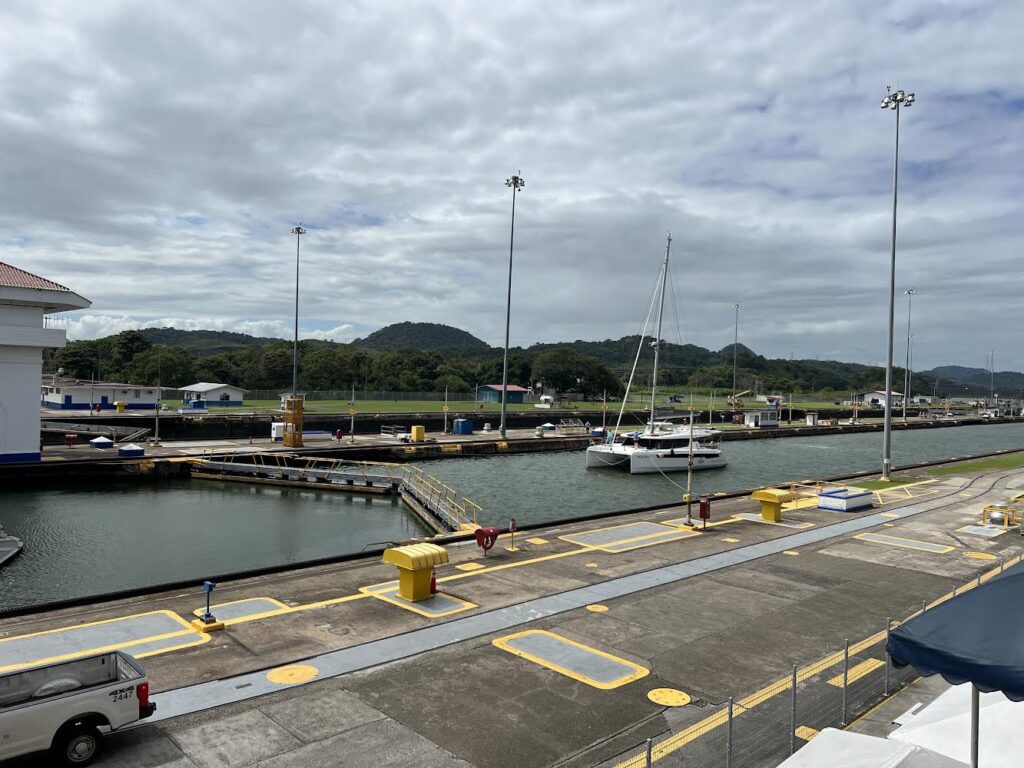
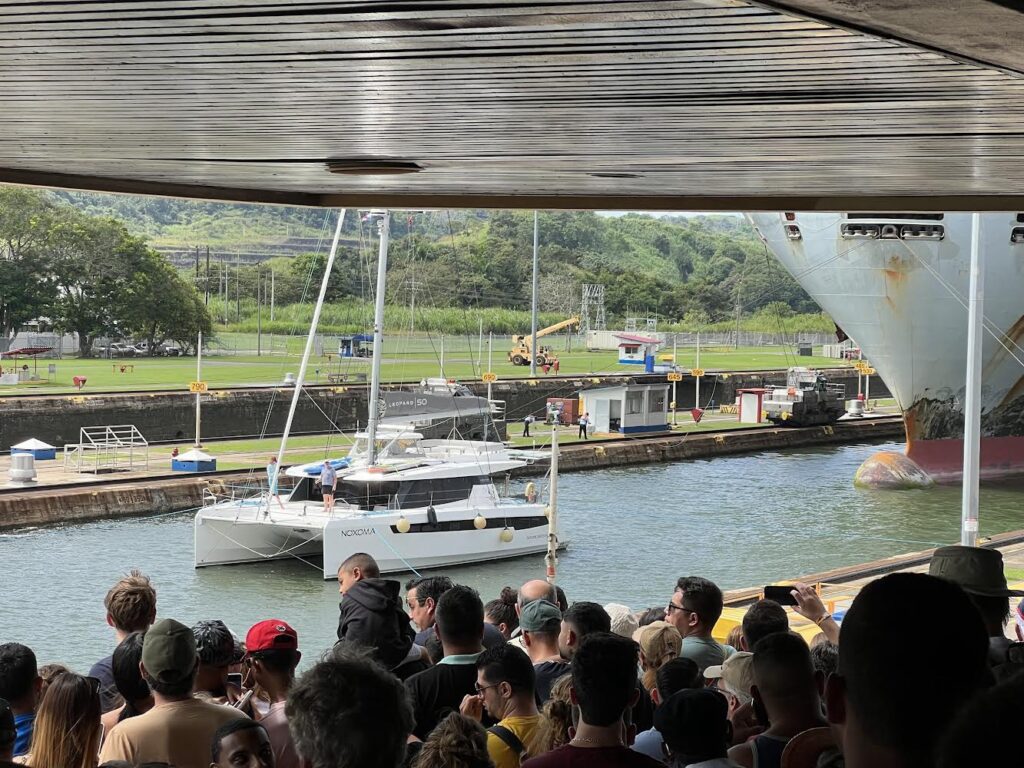
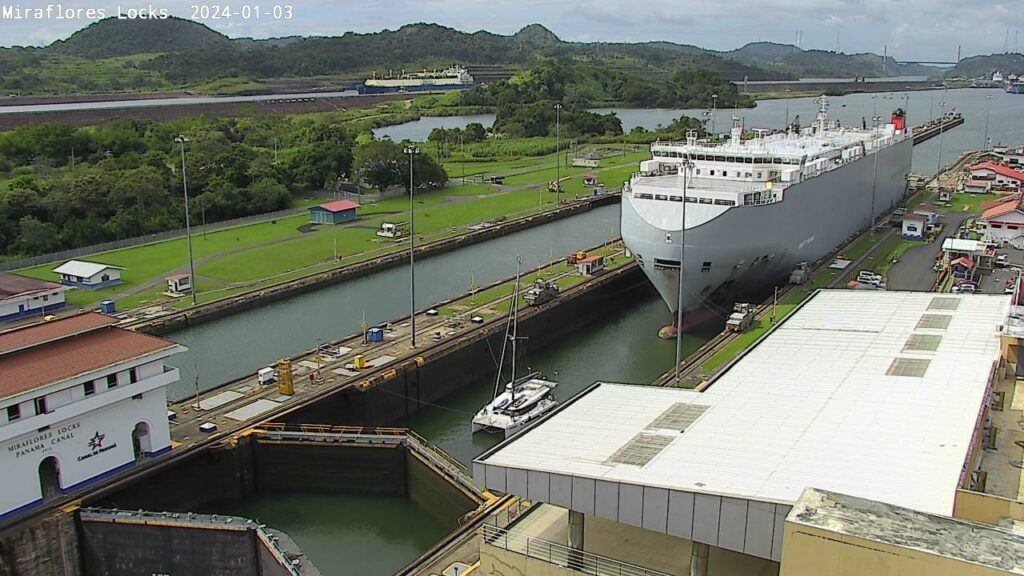

When the last set of locks opened up, and we moved into the Pacific, it felt like an achievement as well as a milestone. We are so exited to have reached a new ocean!
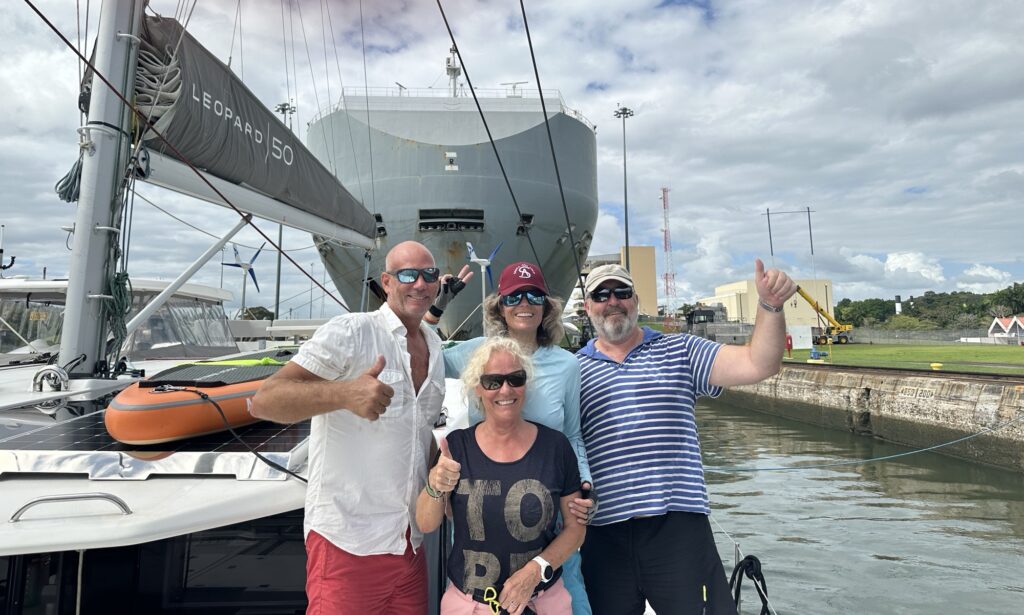
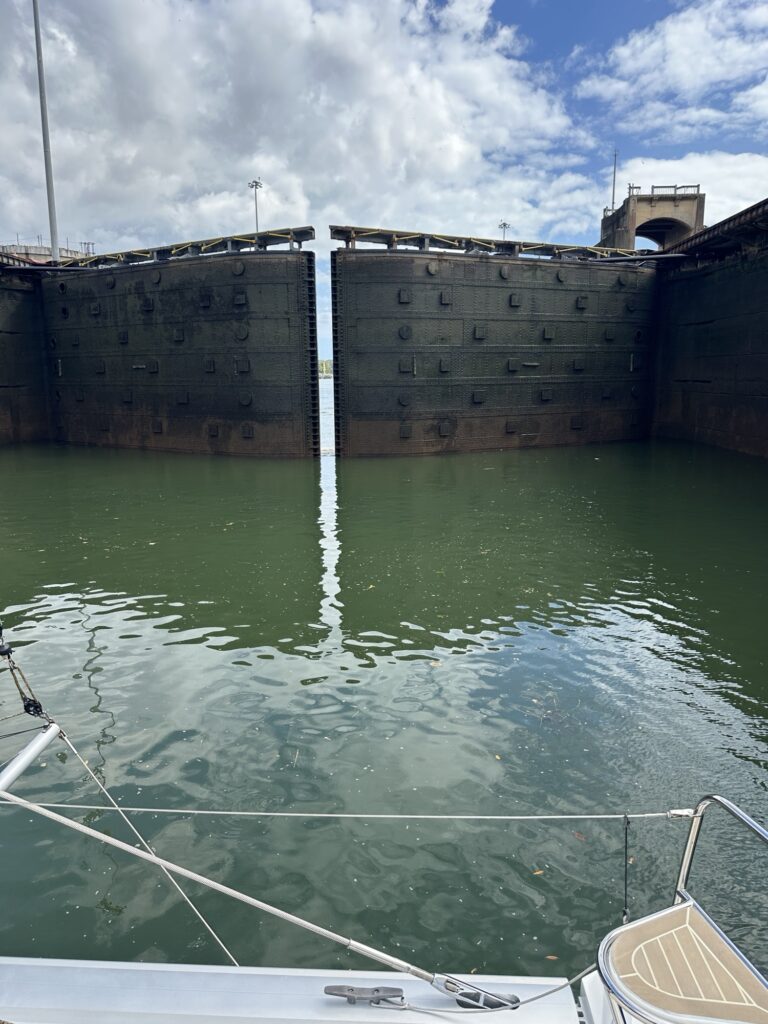
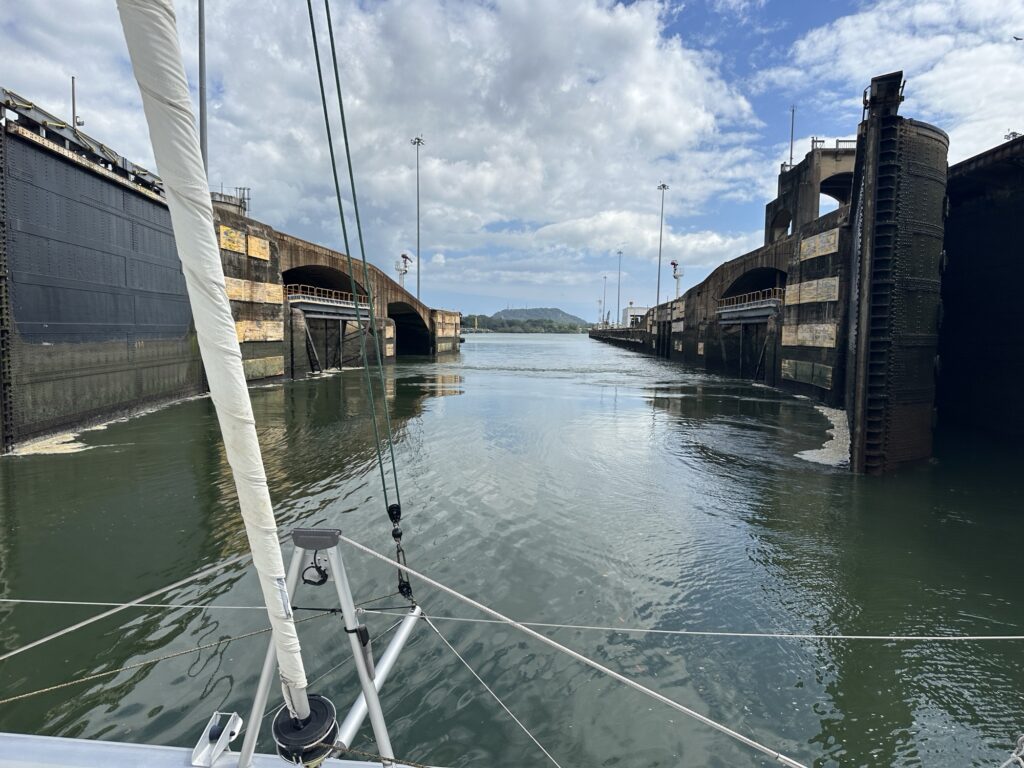
We motored out of the last lock, passed through the commercial harbour area, before we spotted the impressive skyline of Panama City.
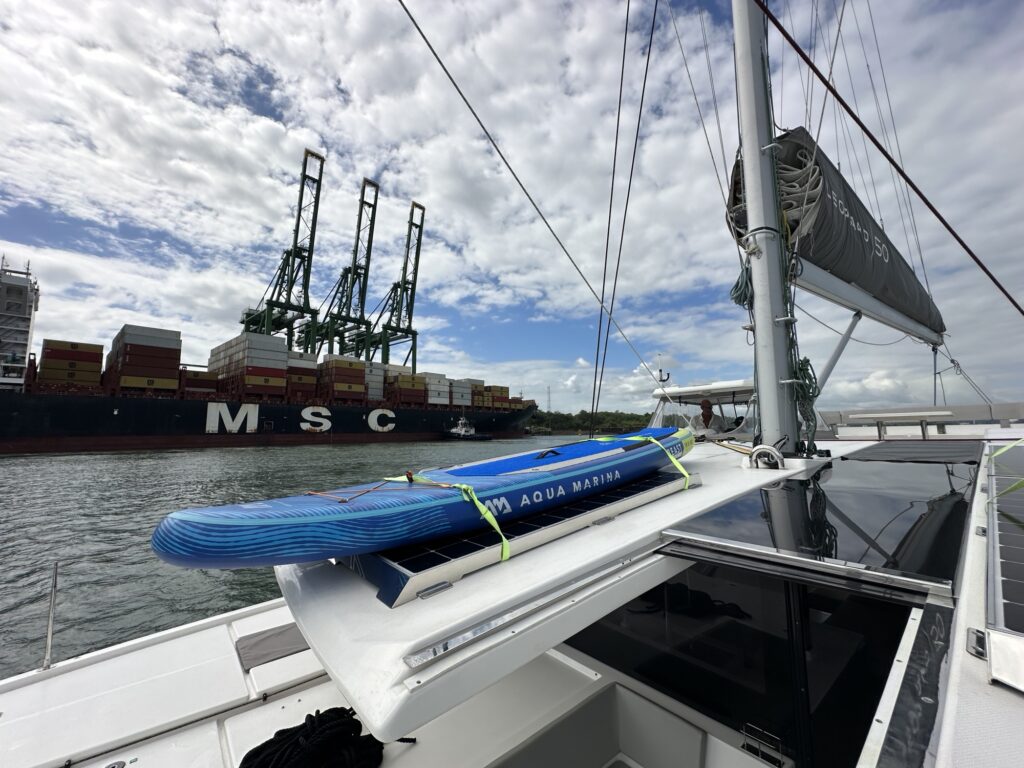
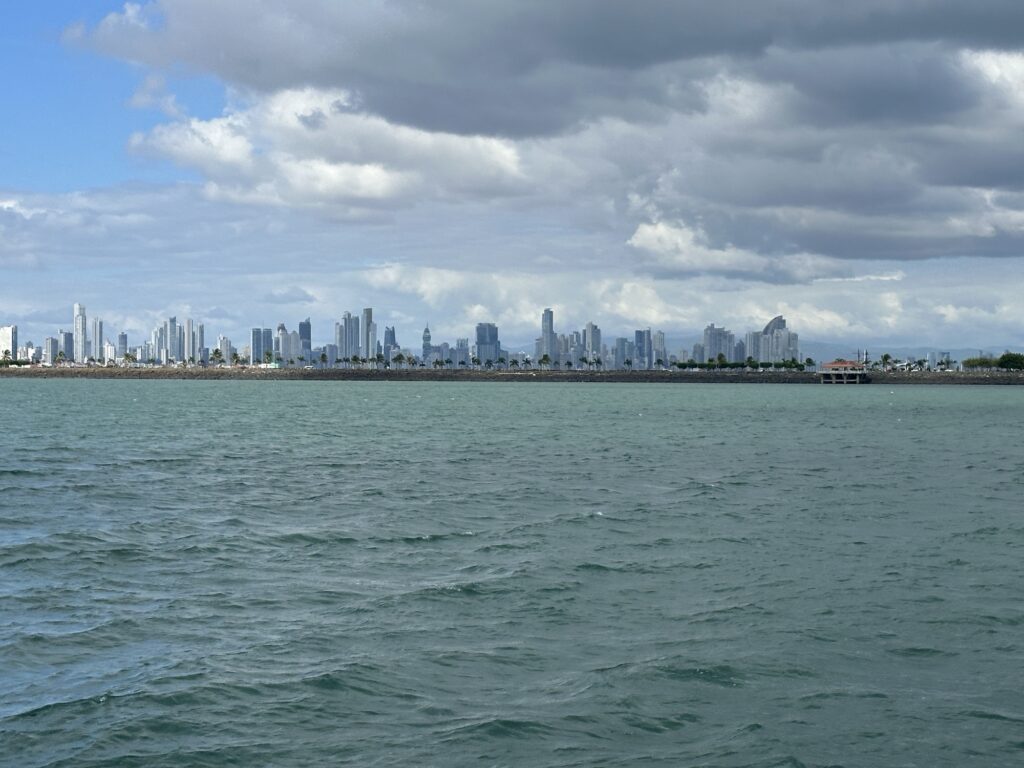
Our advisor and line handler, as well as our rented gear, were picked up right after. The four of us steamed ahead to La Playita Marina, where we had booked a berth. Rune and Hanne left Noxoma, as they had booked a hotel room in the city for their last two nights. We met them the following day for a lovely dinner, before they flew back home to Norway.
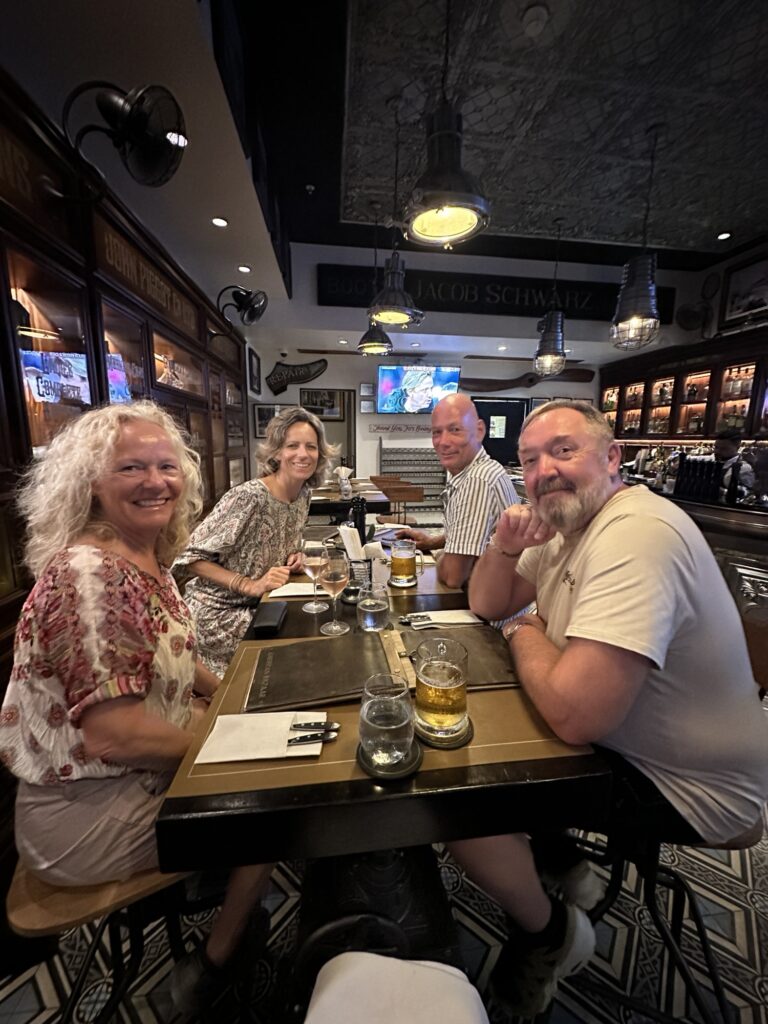
So, we are yet again alone on Noxoma. Crossing the Pacific will be the longest leg we will have without being on land. It is remote, vast and you need to be very well prepared. So, we’ll spend some time doing just that, while we wait for our long term visa to French Polynesia to be processed.
We will take advantage of being in a big city, the last one before we reach New Zealand, as well as exploring the Pacific Panamanian coast, before we head out into the big ocean!
